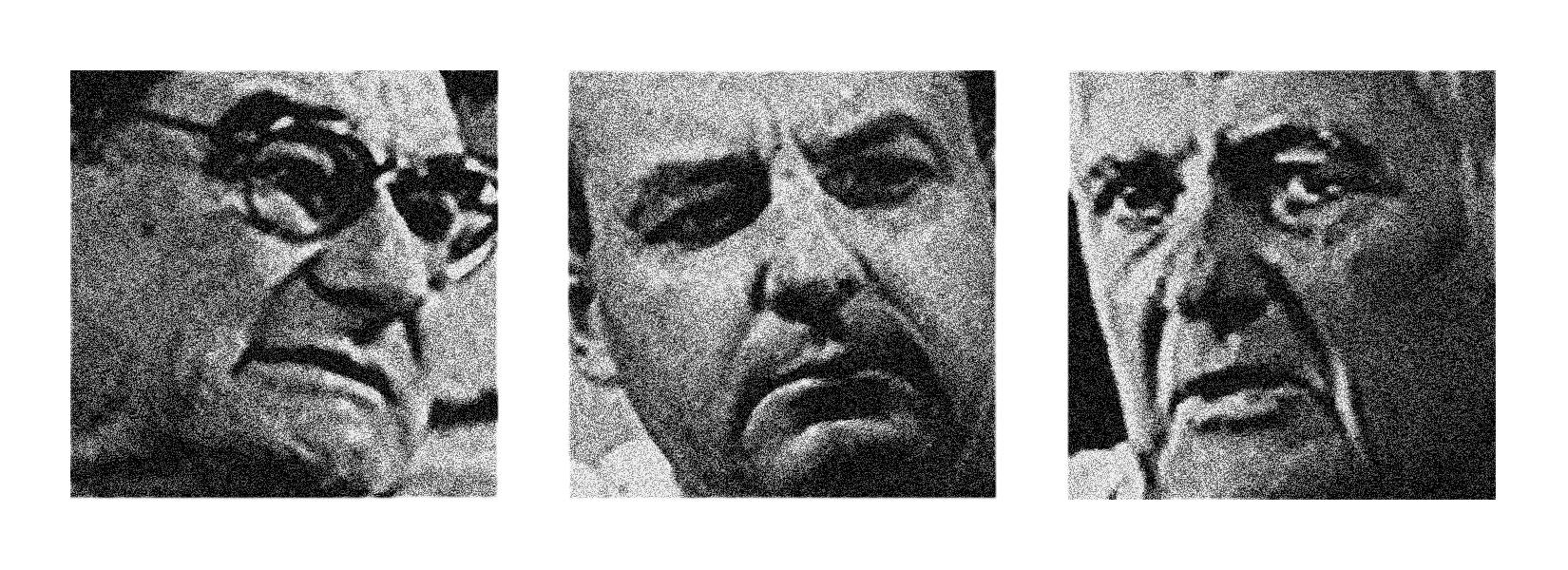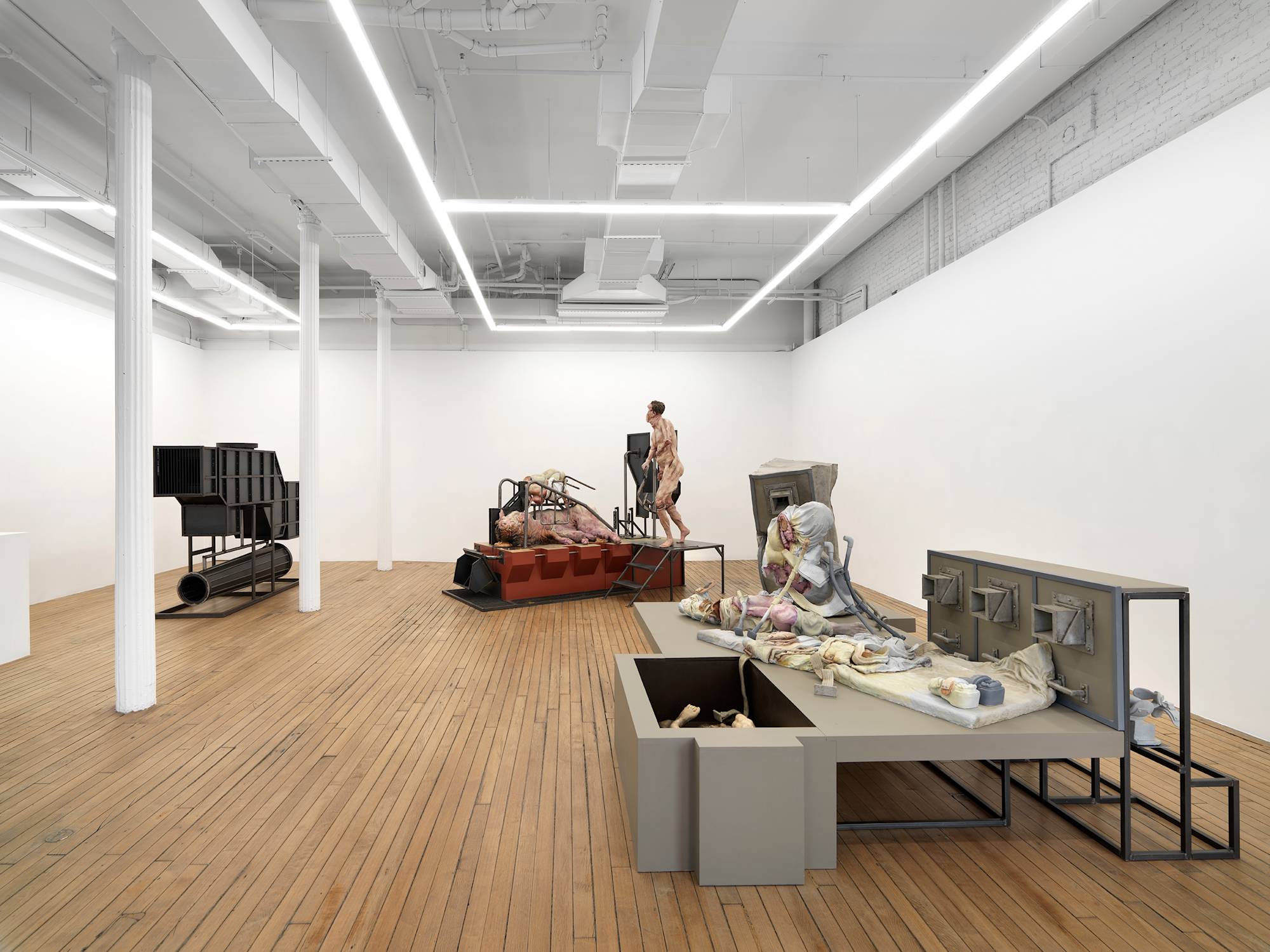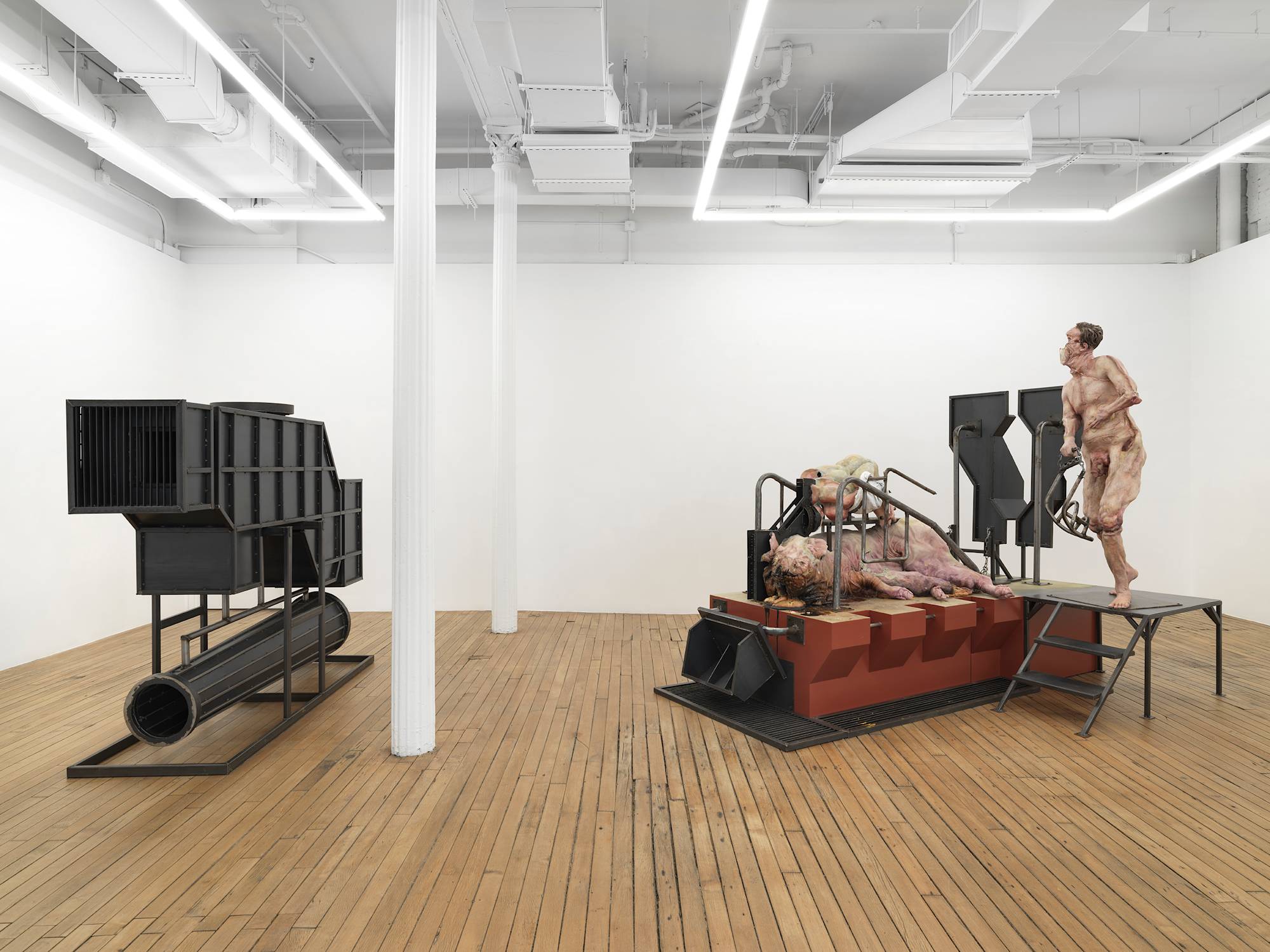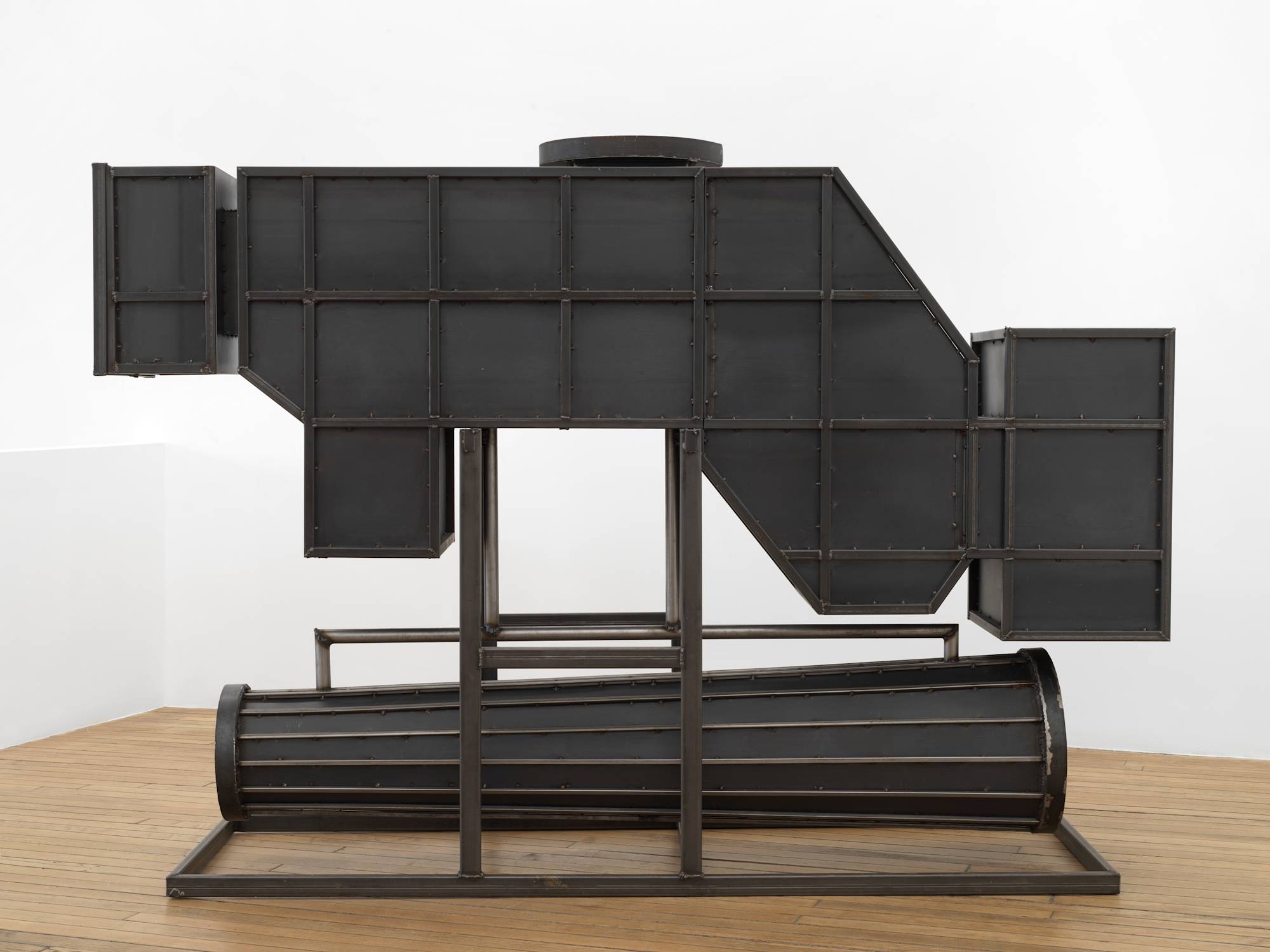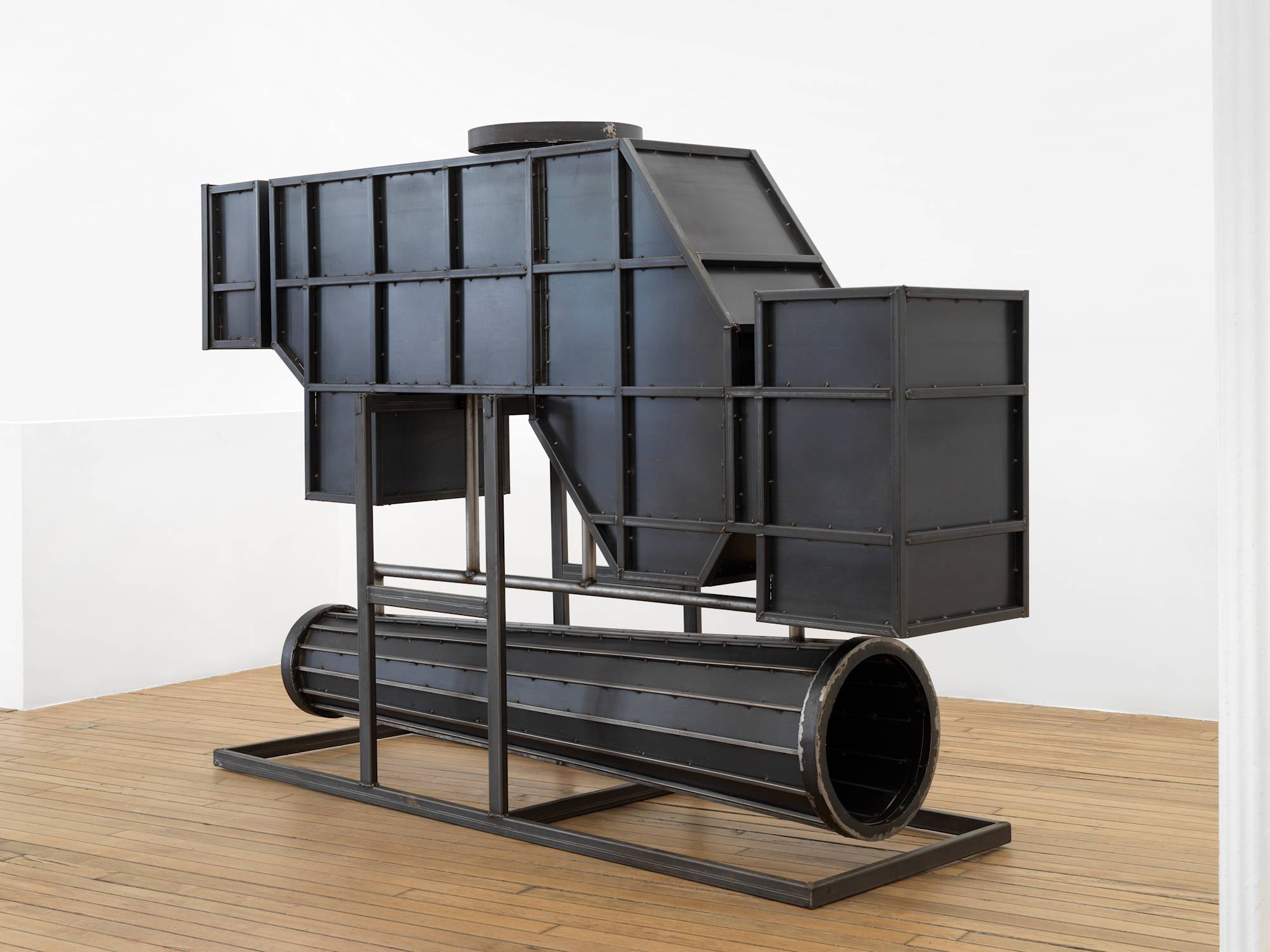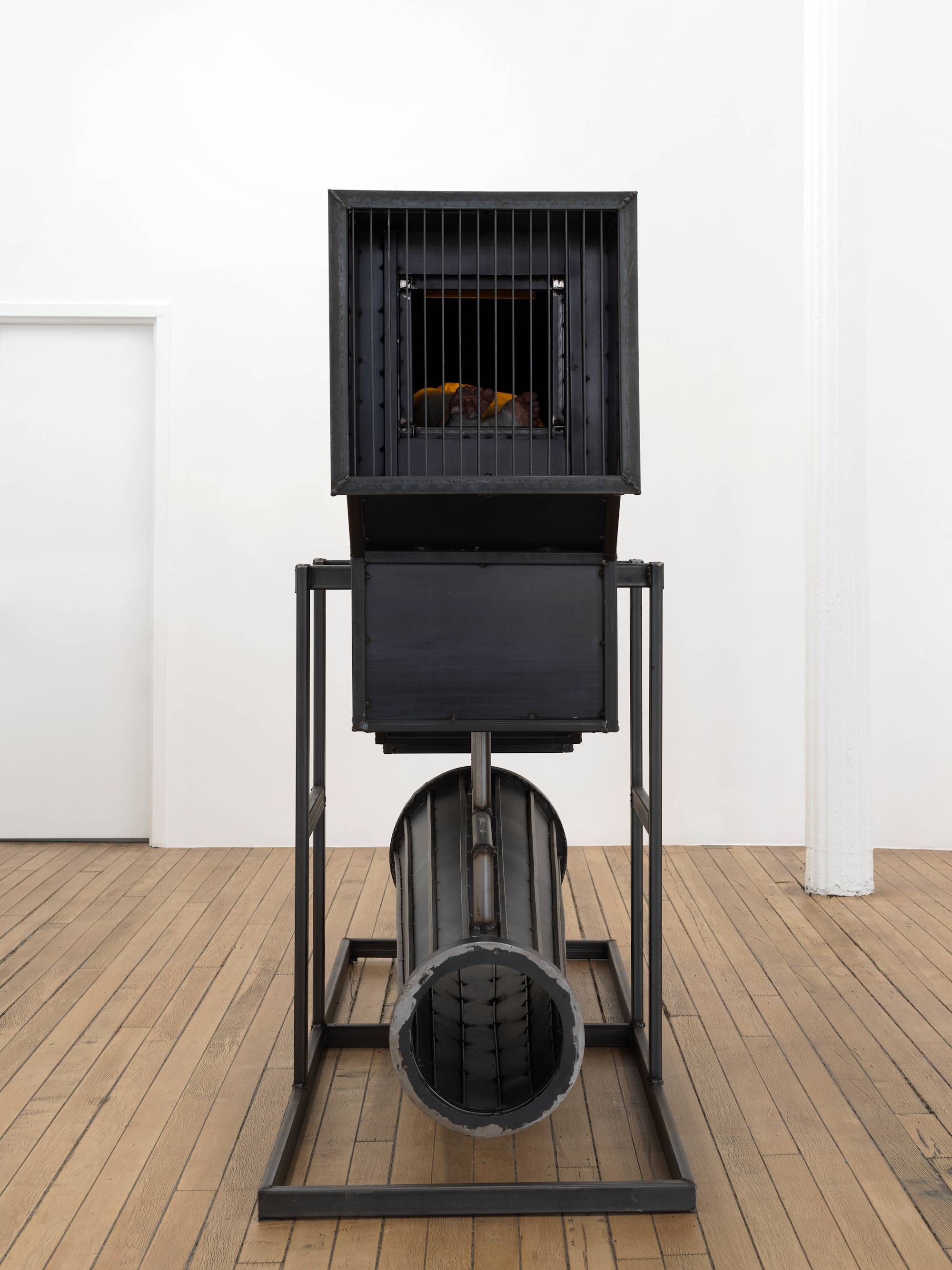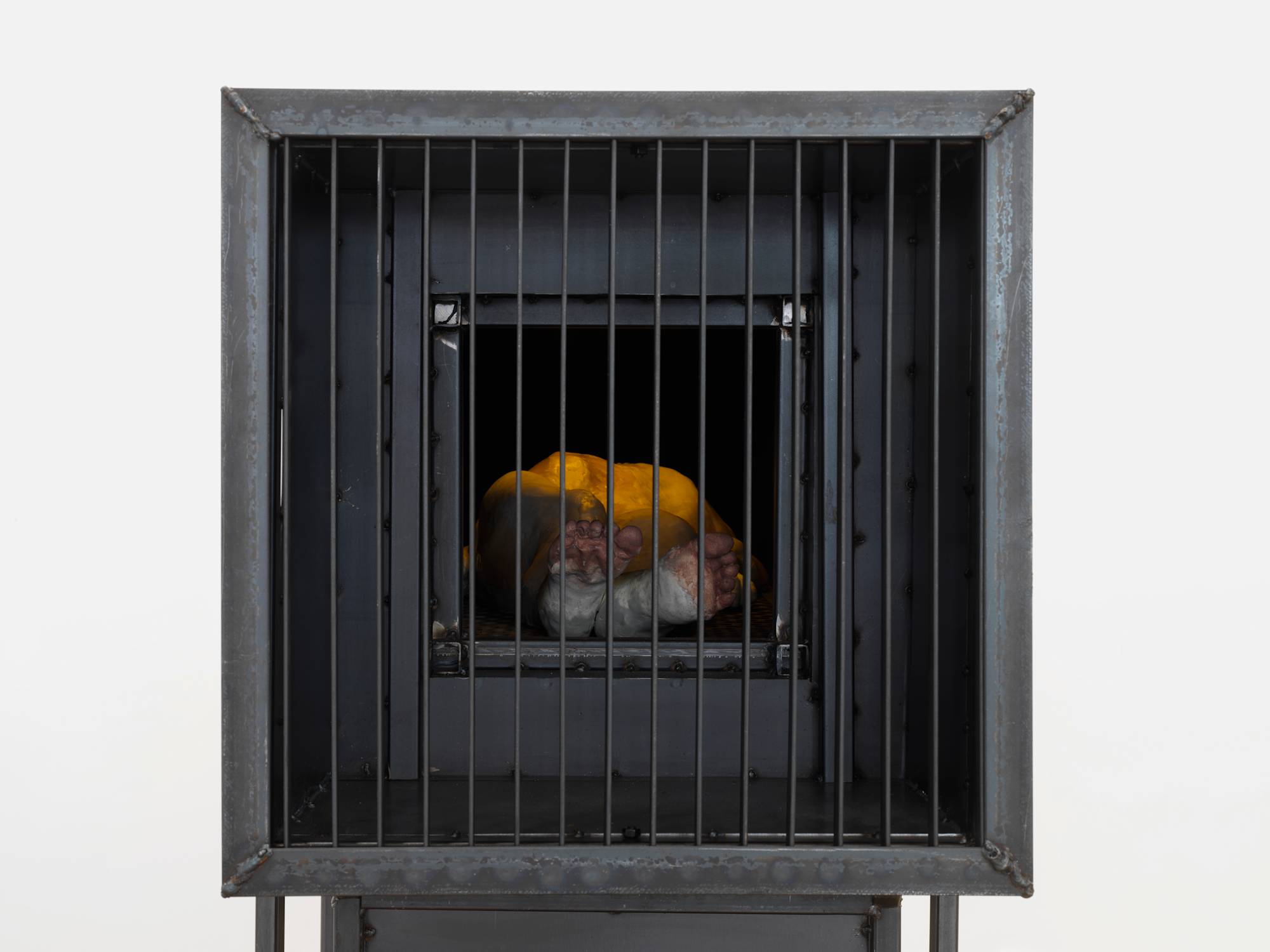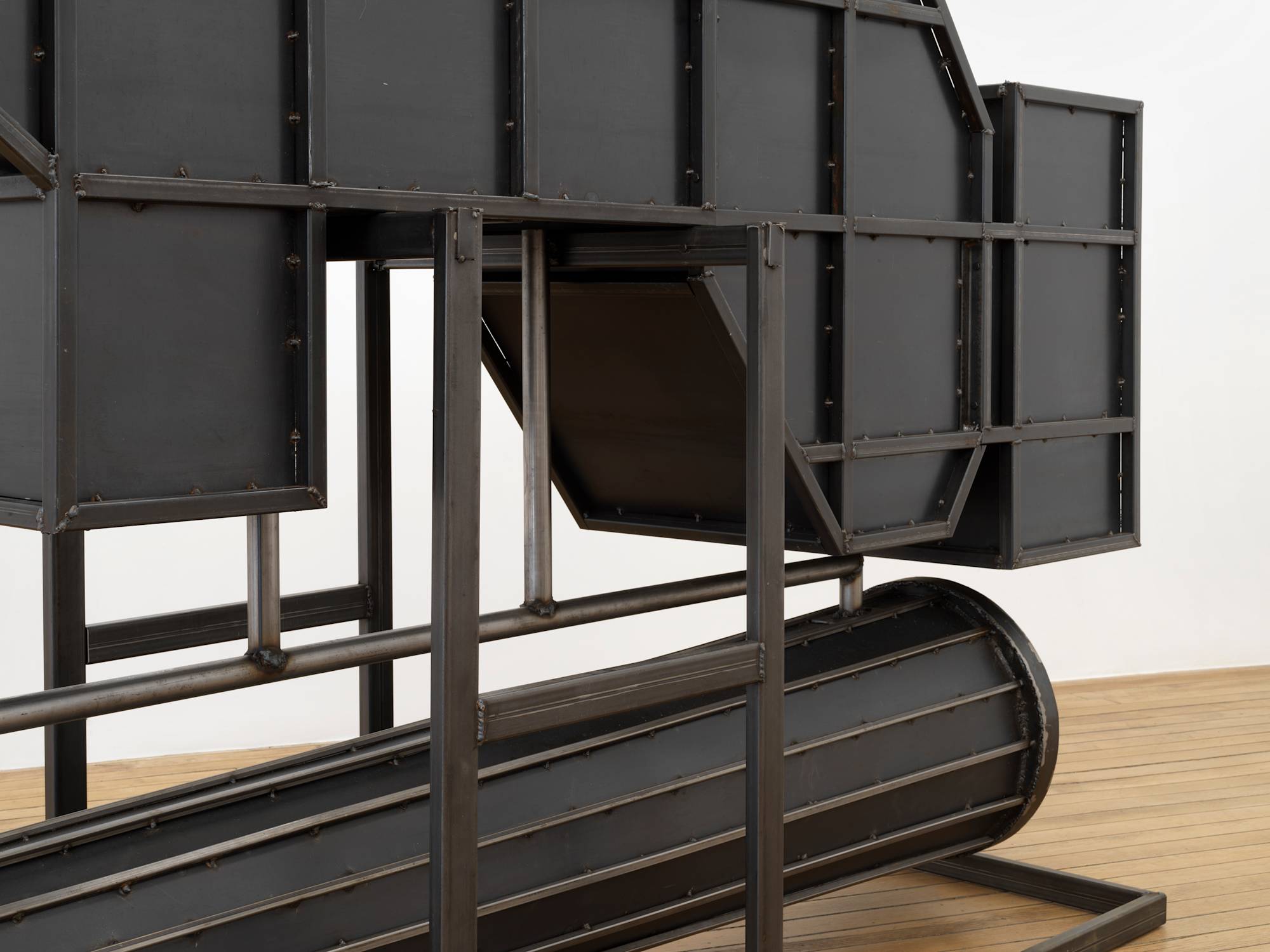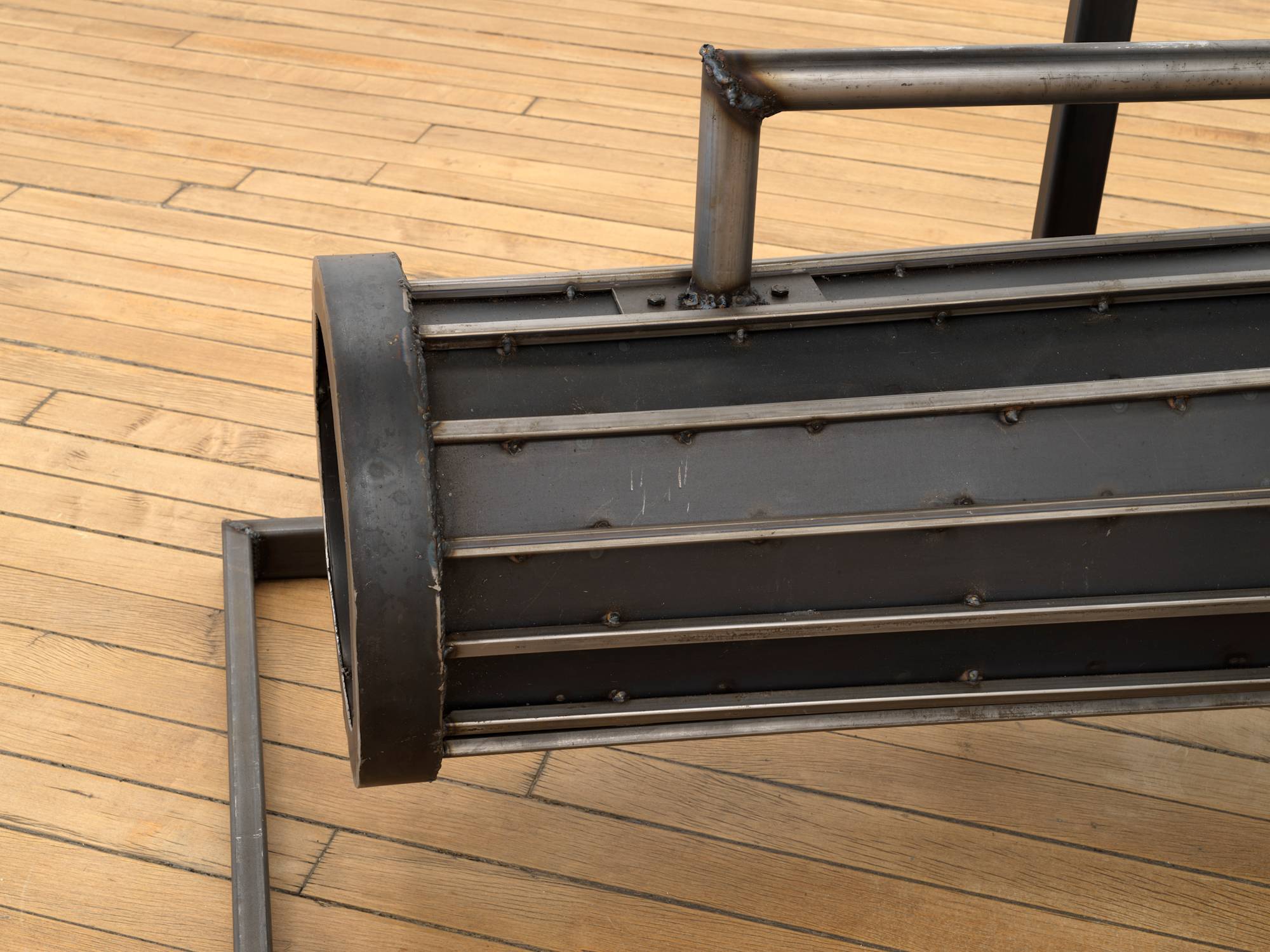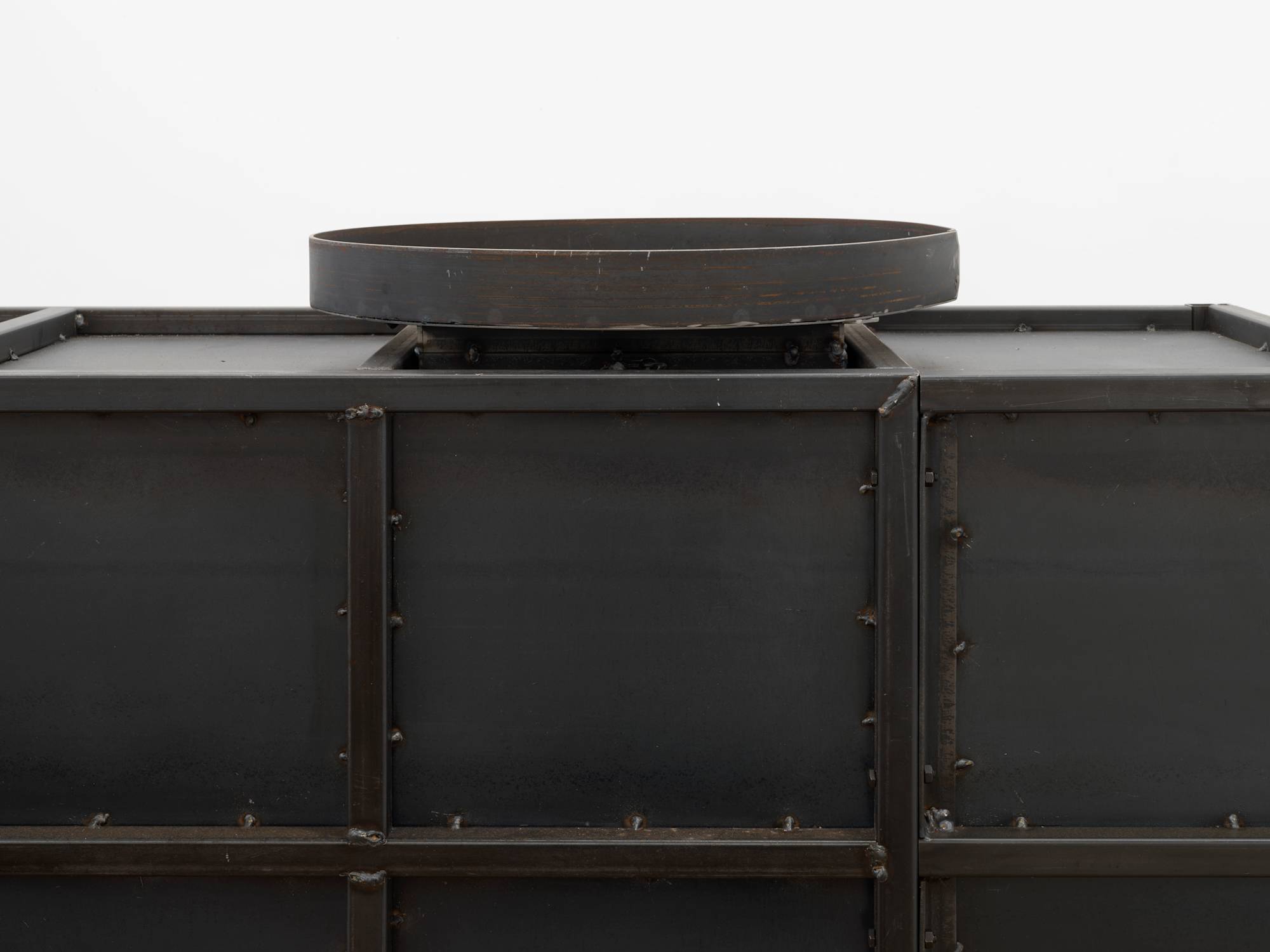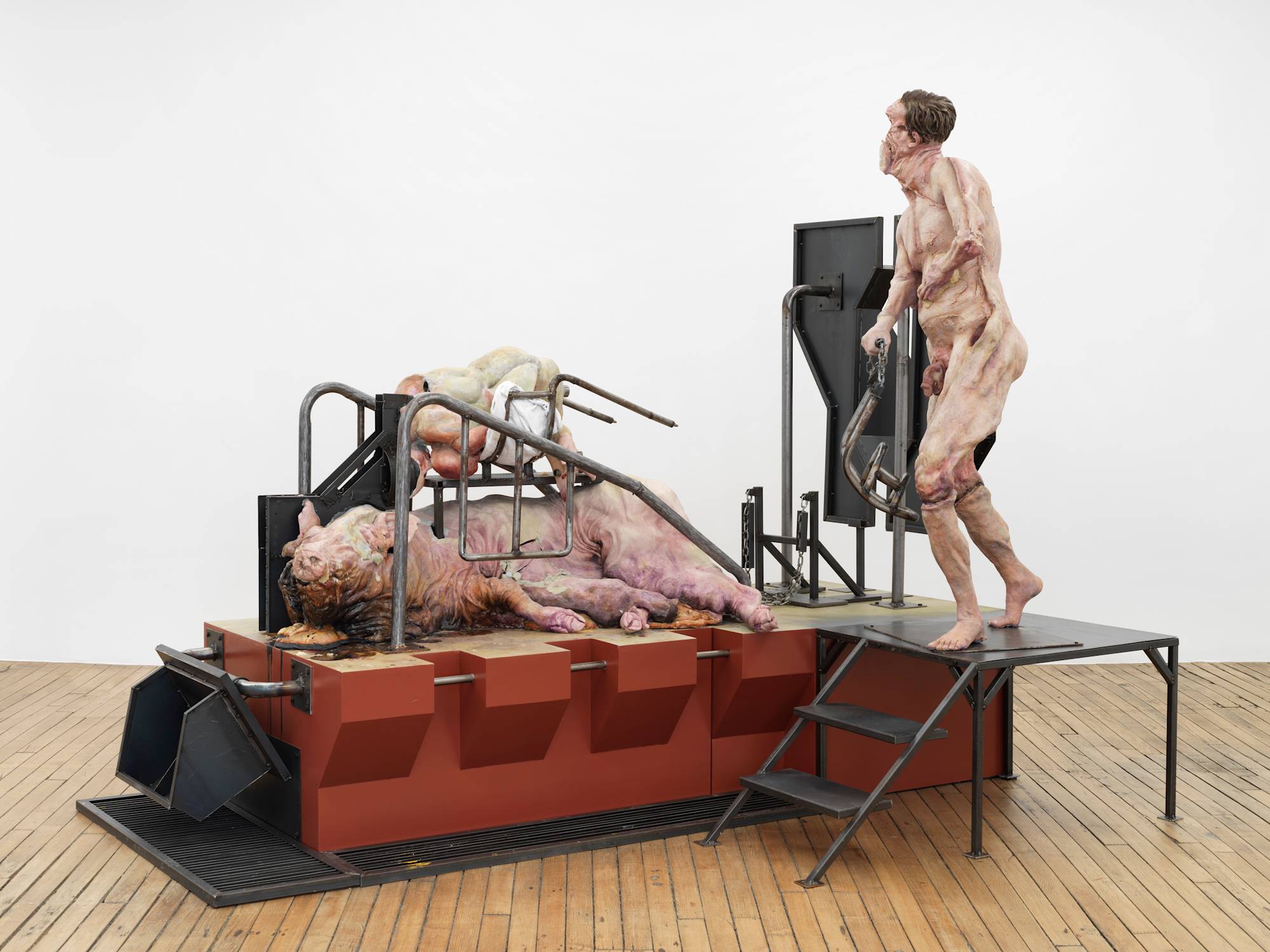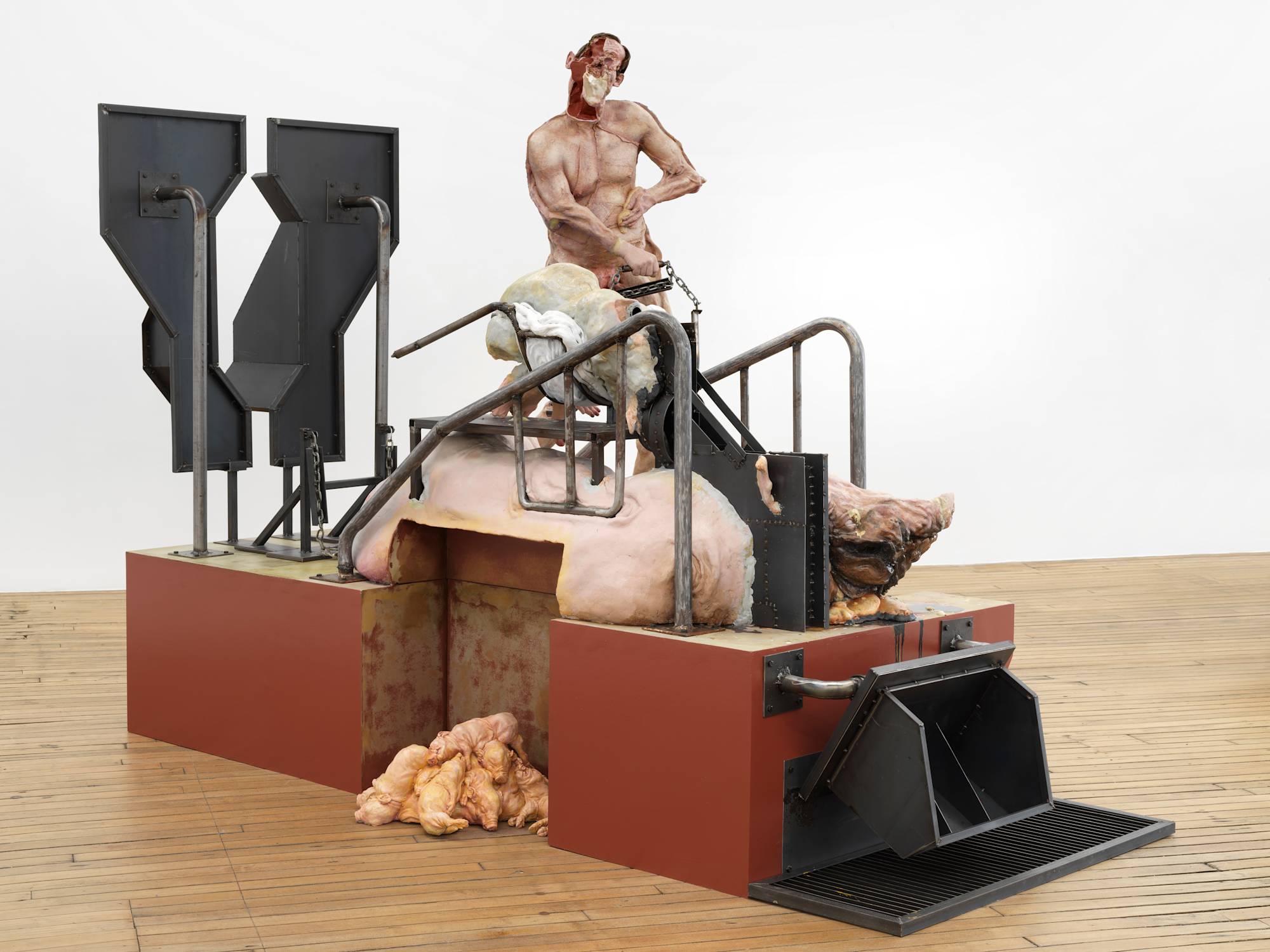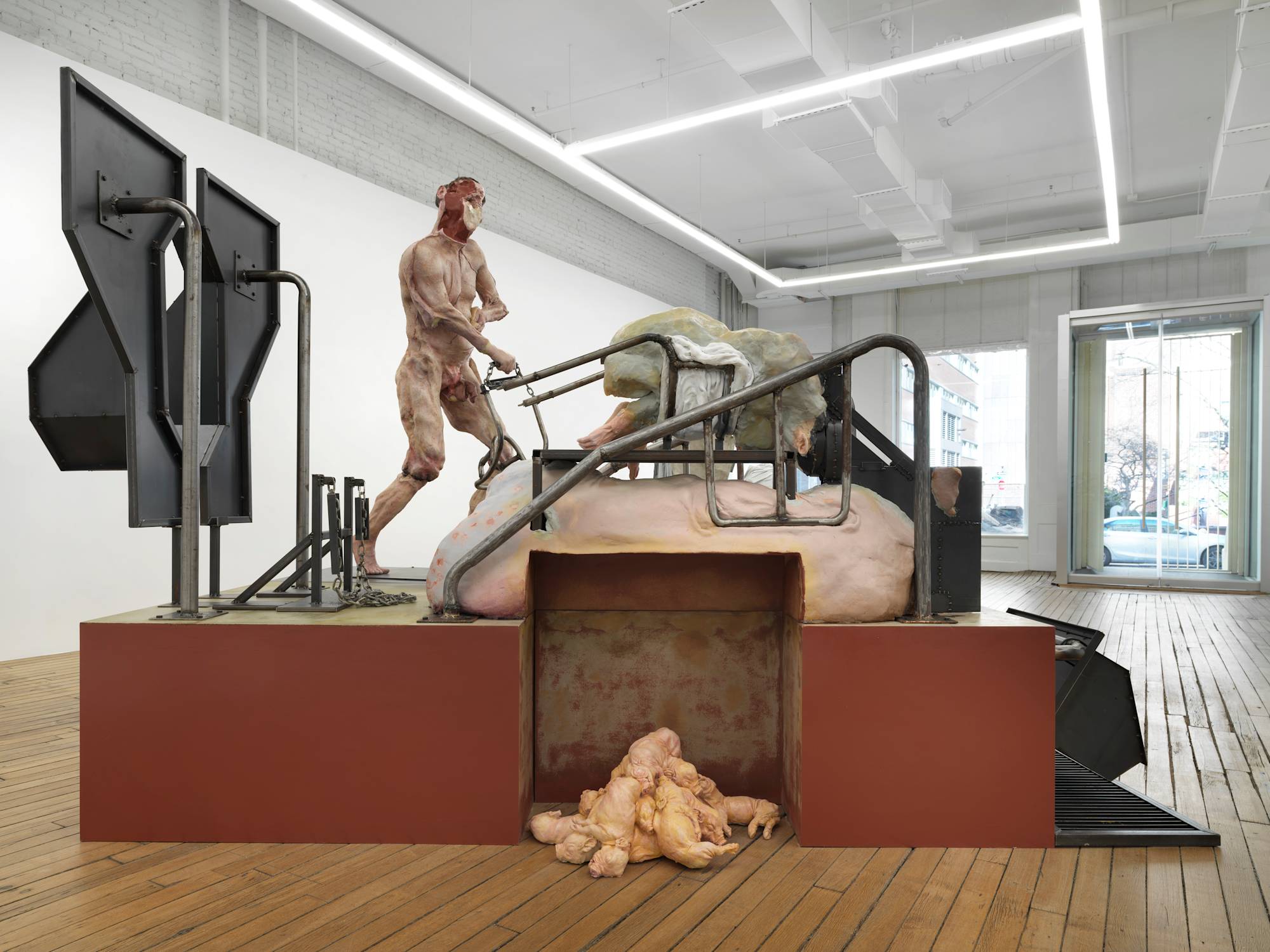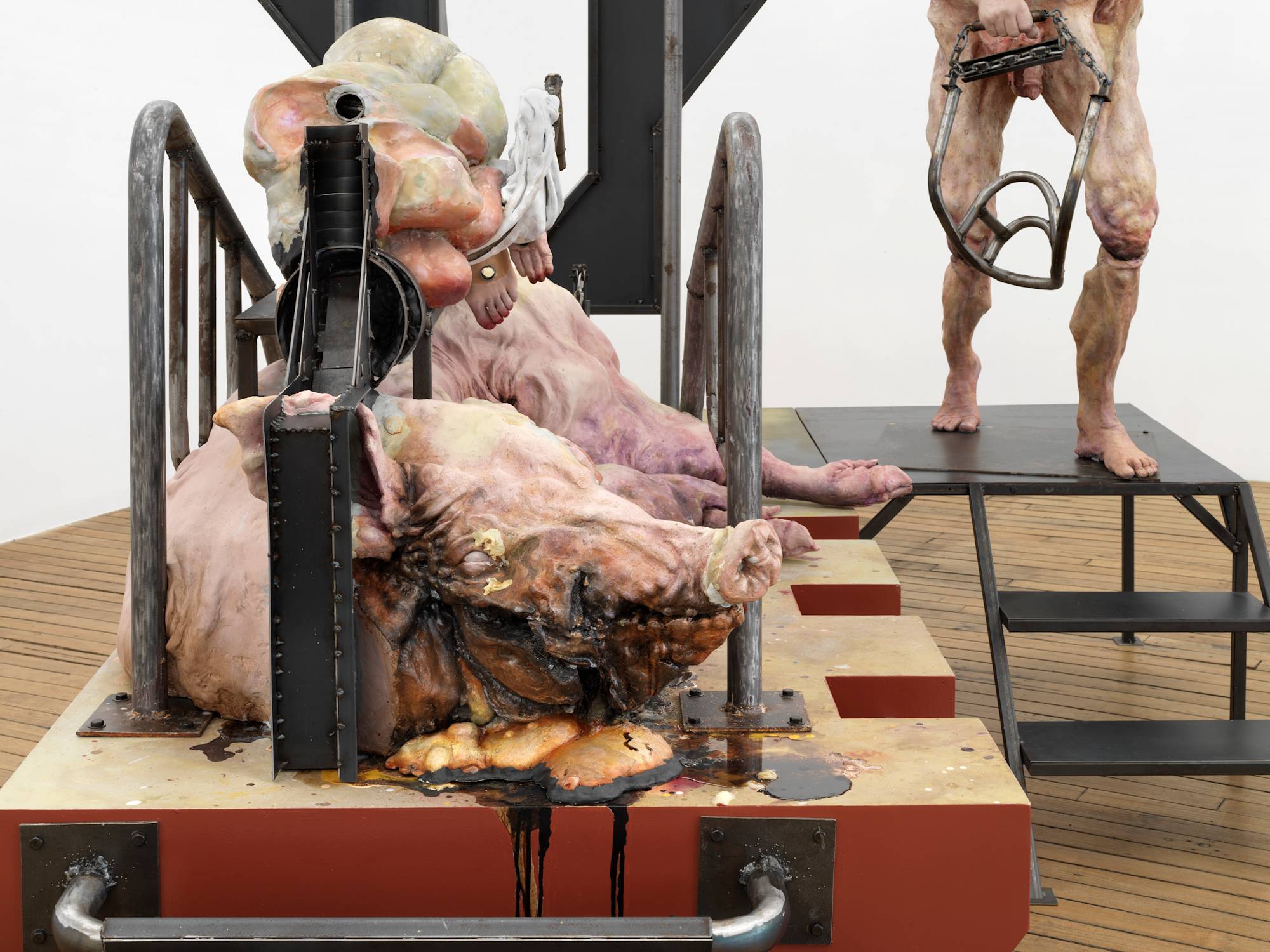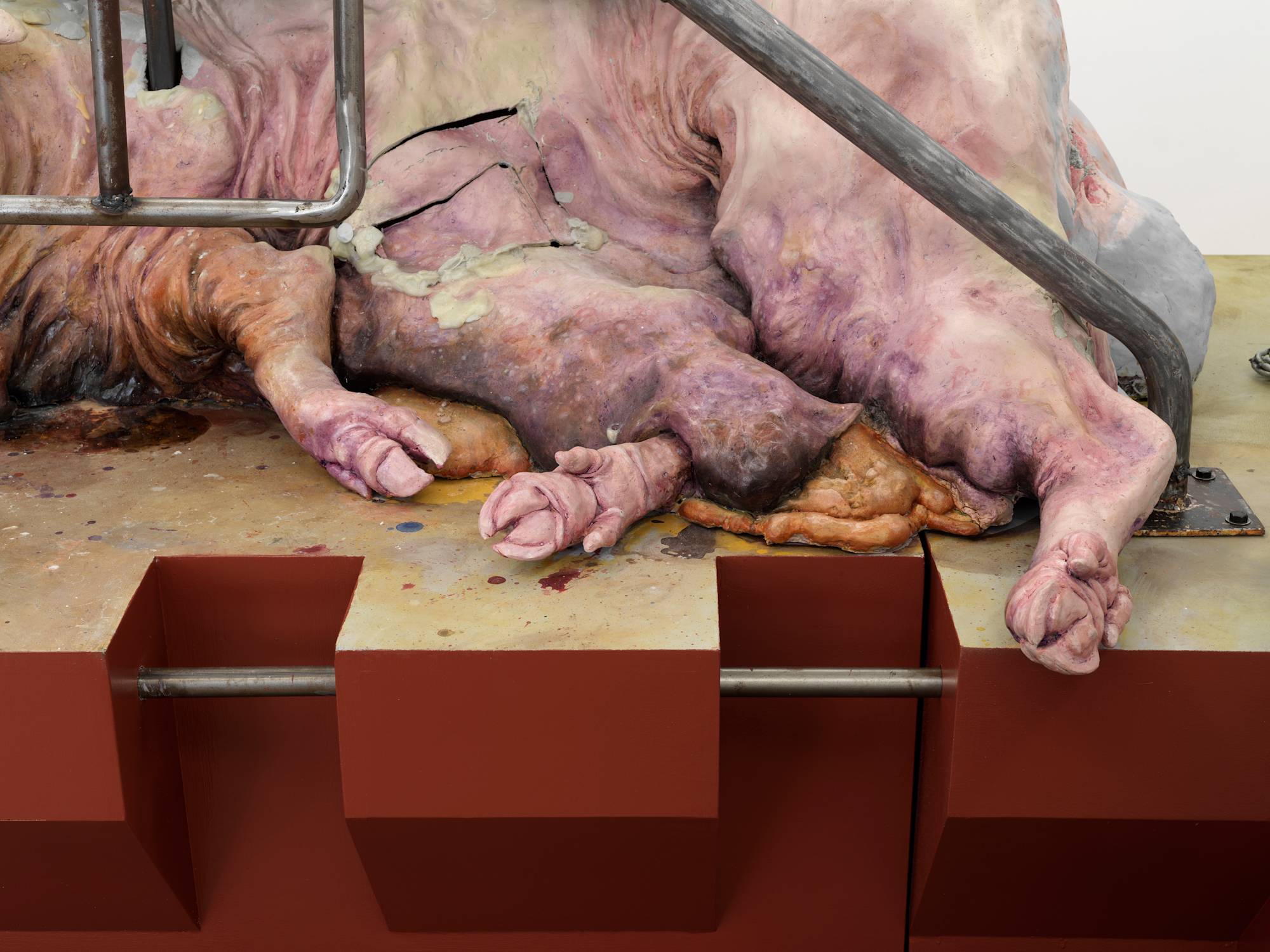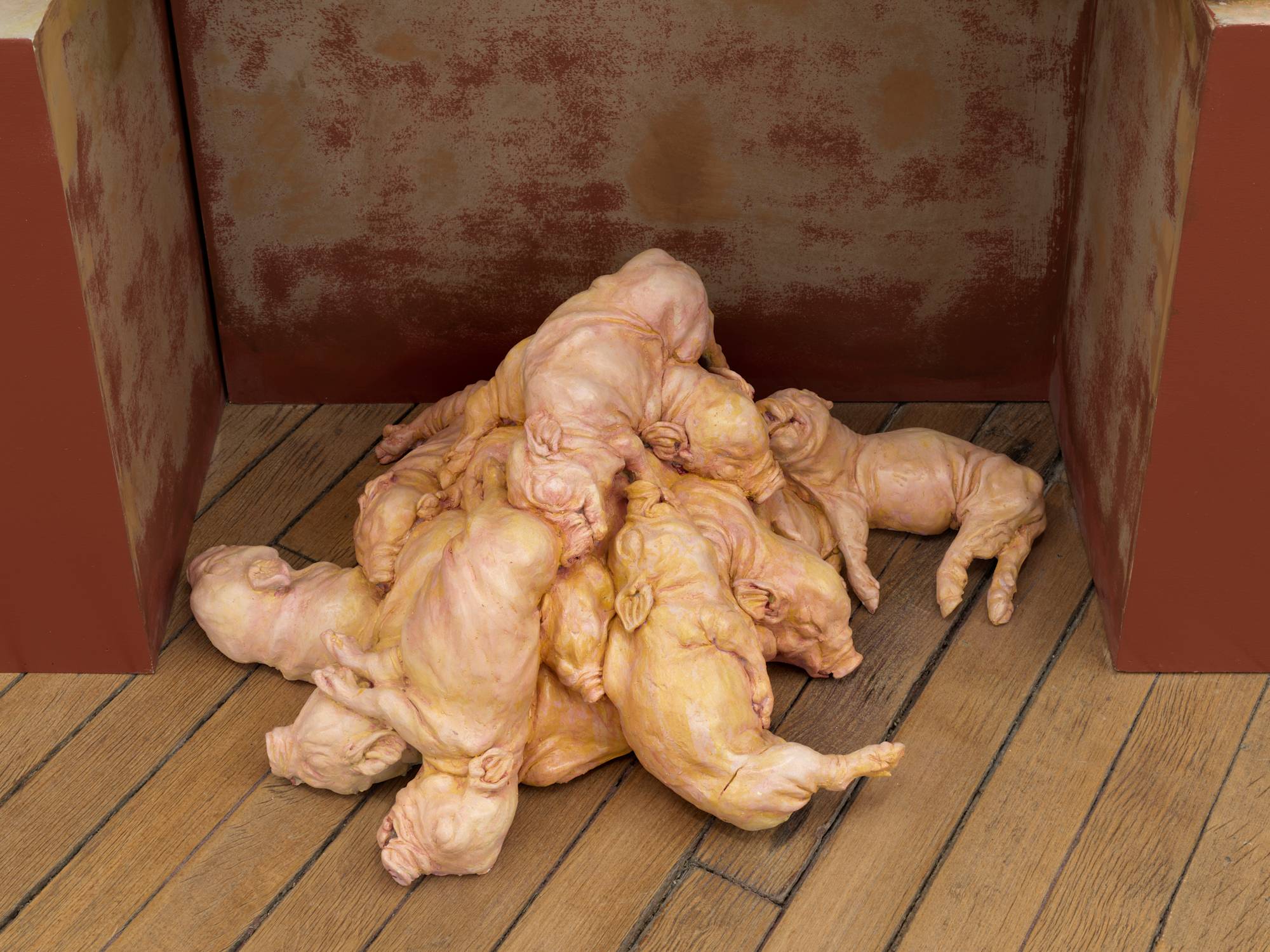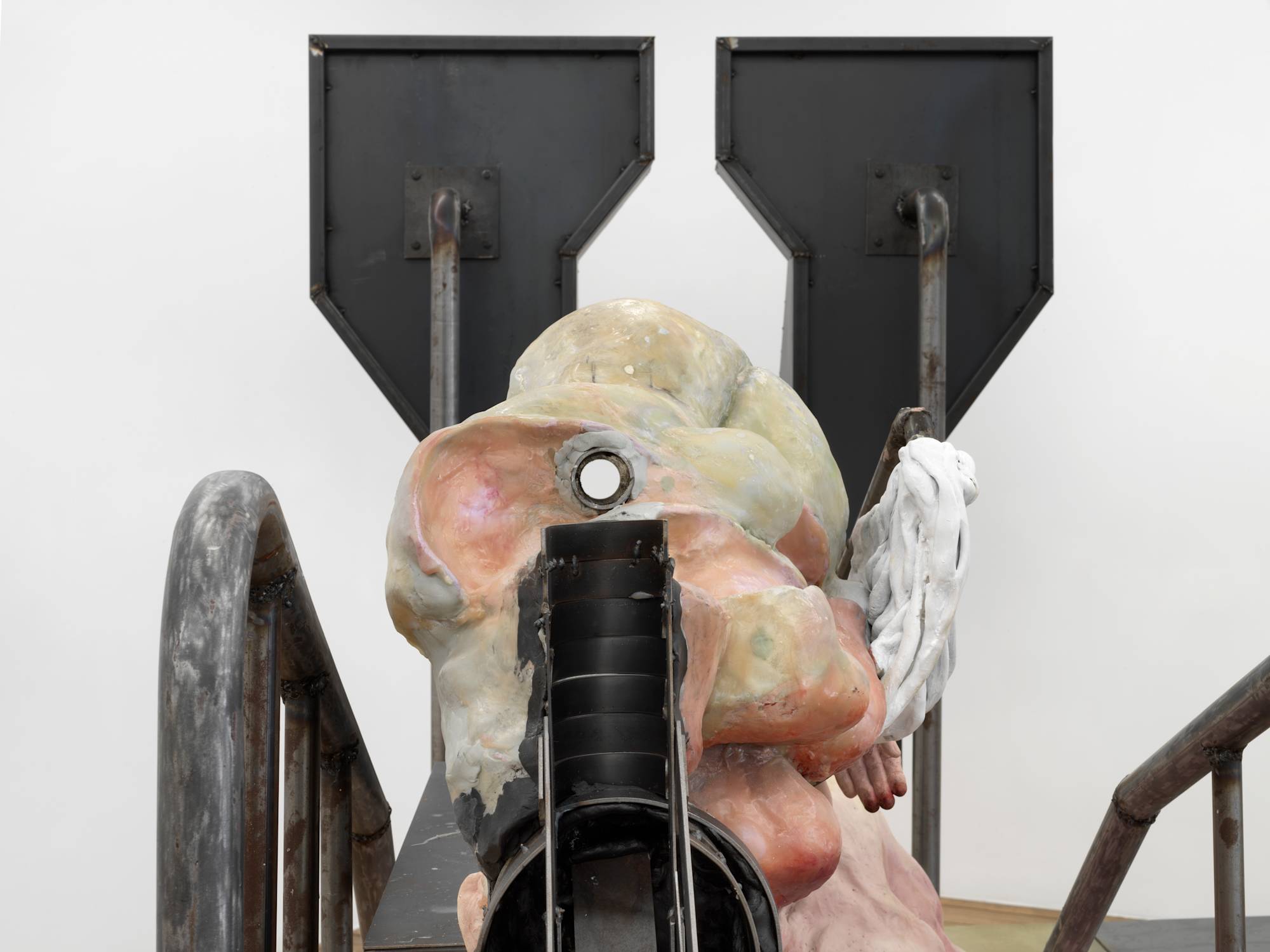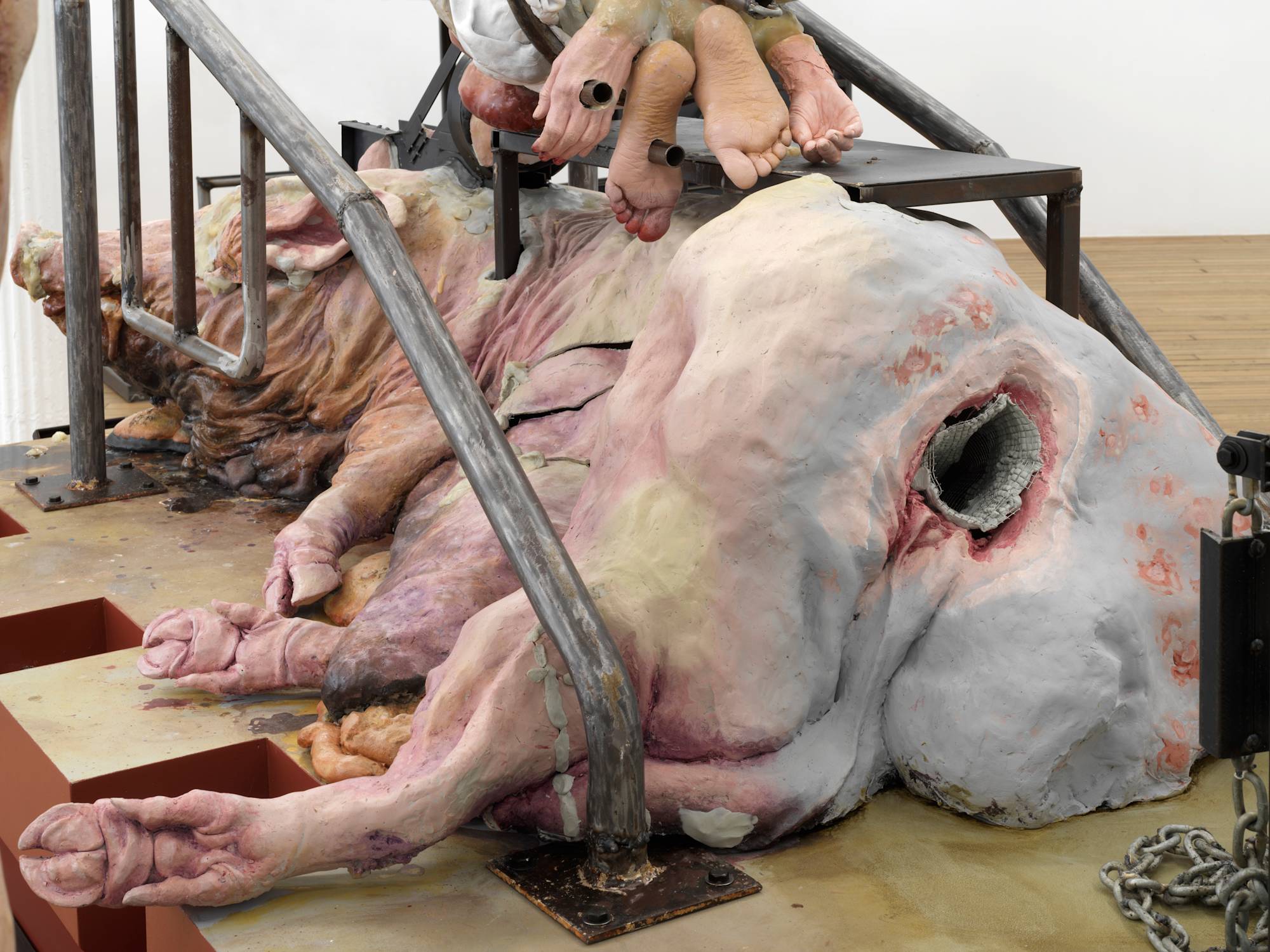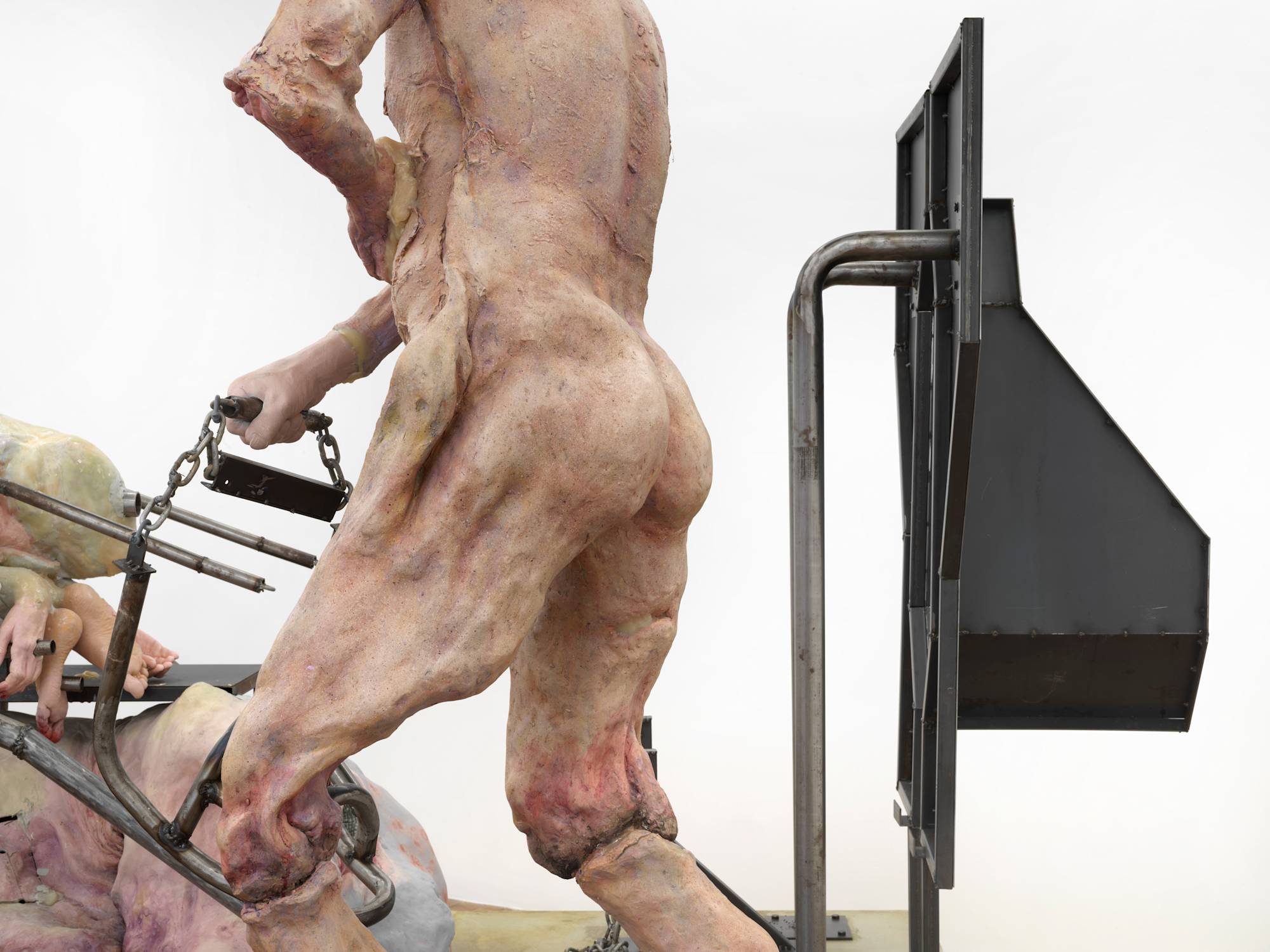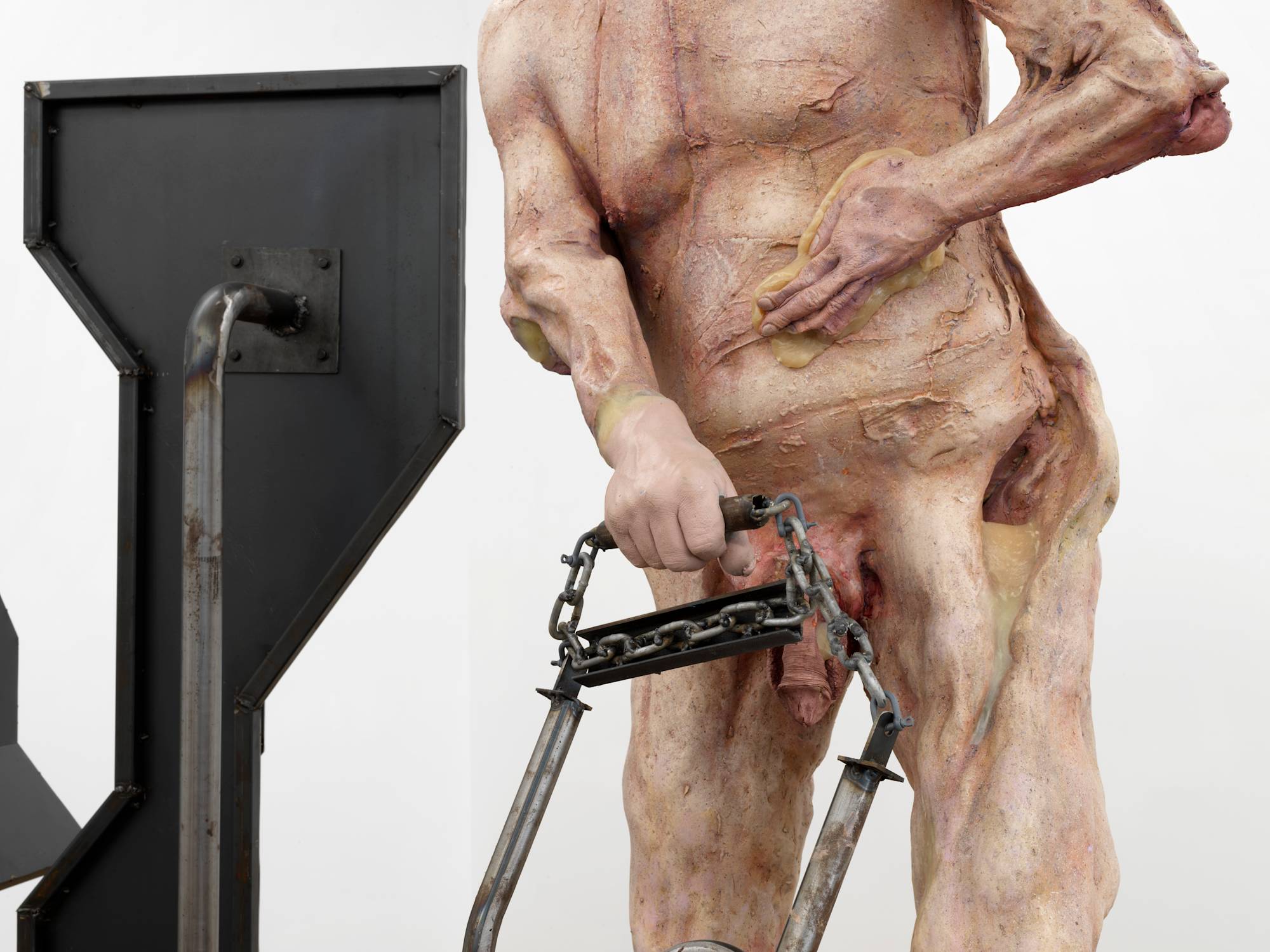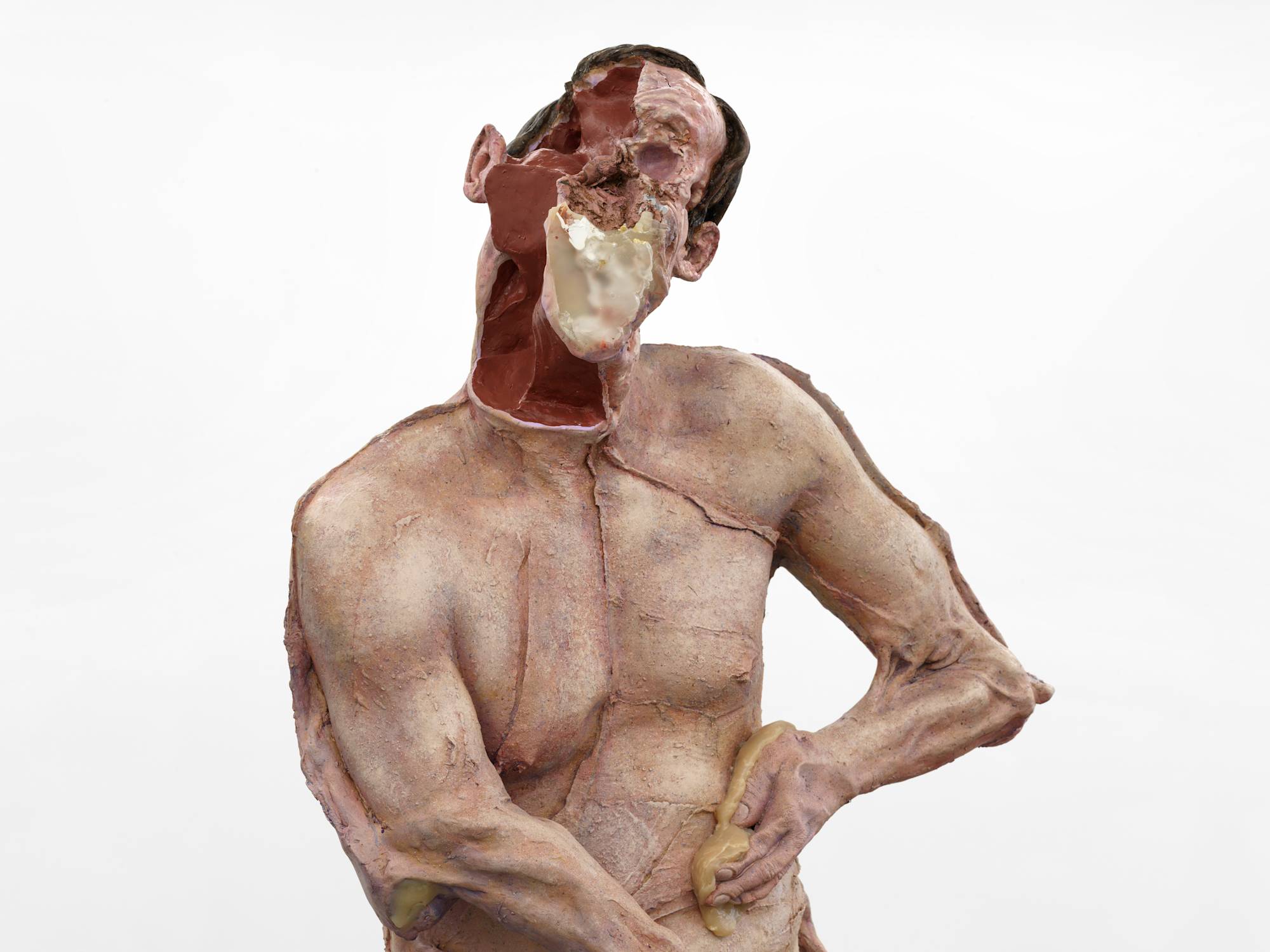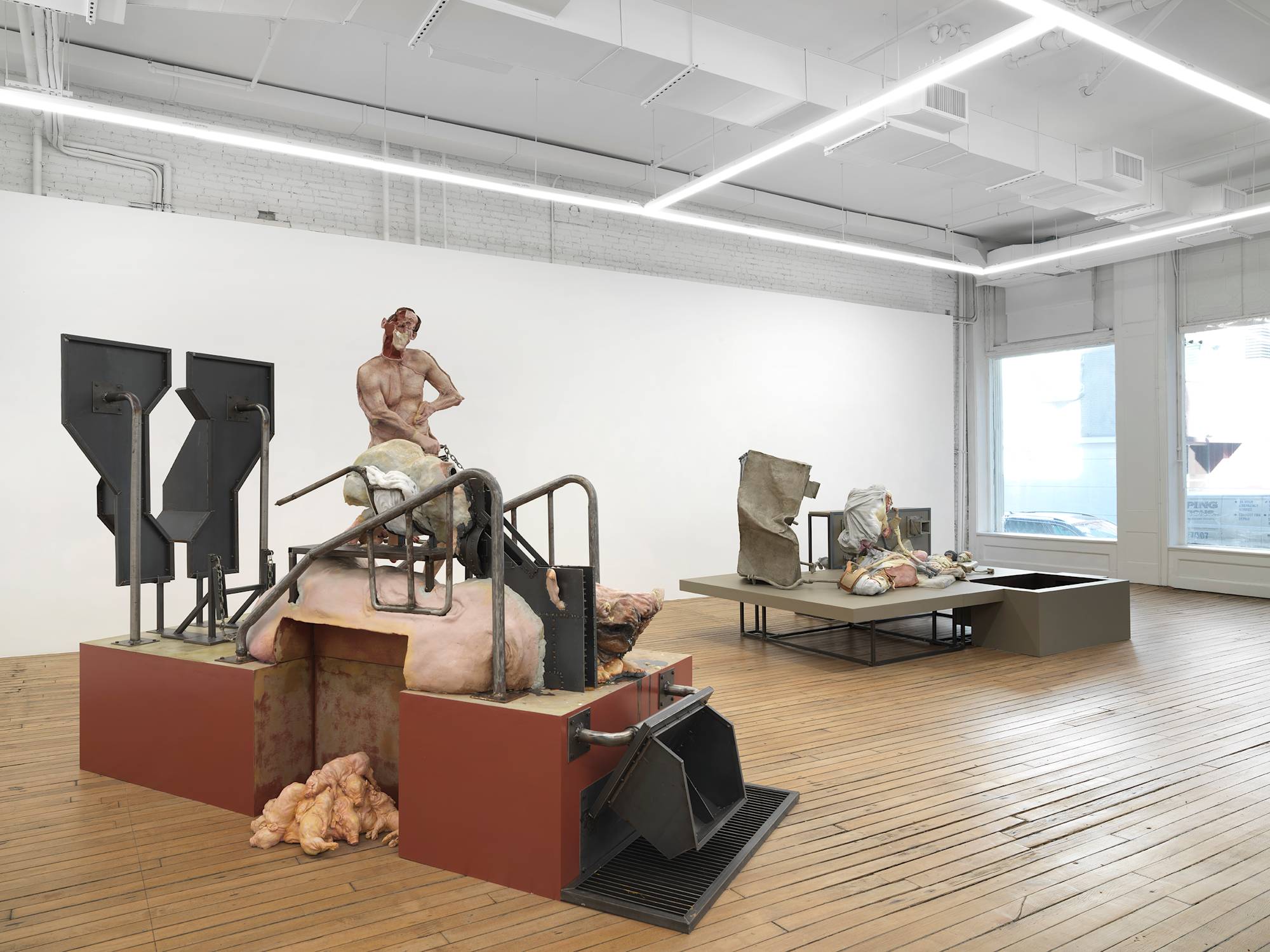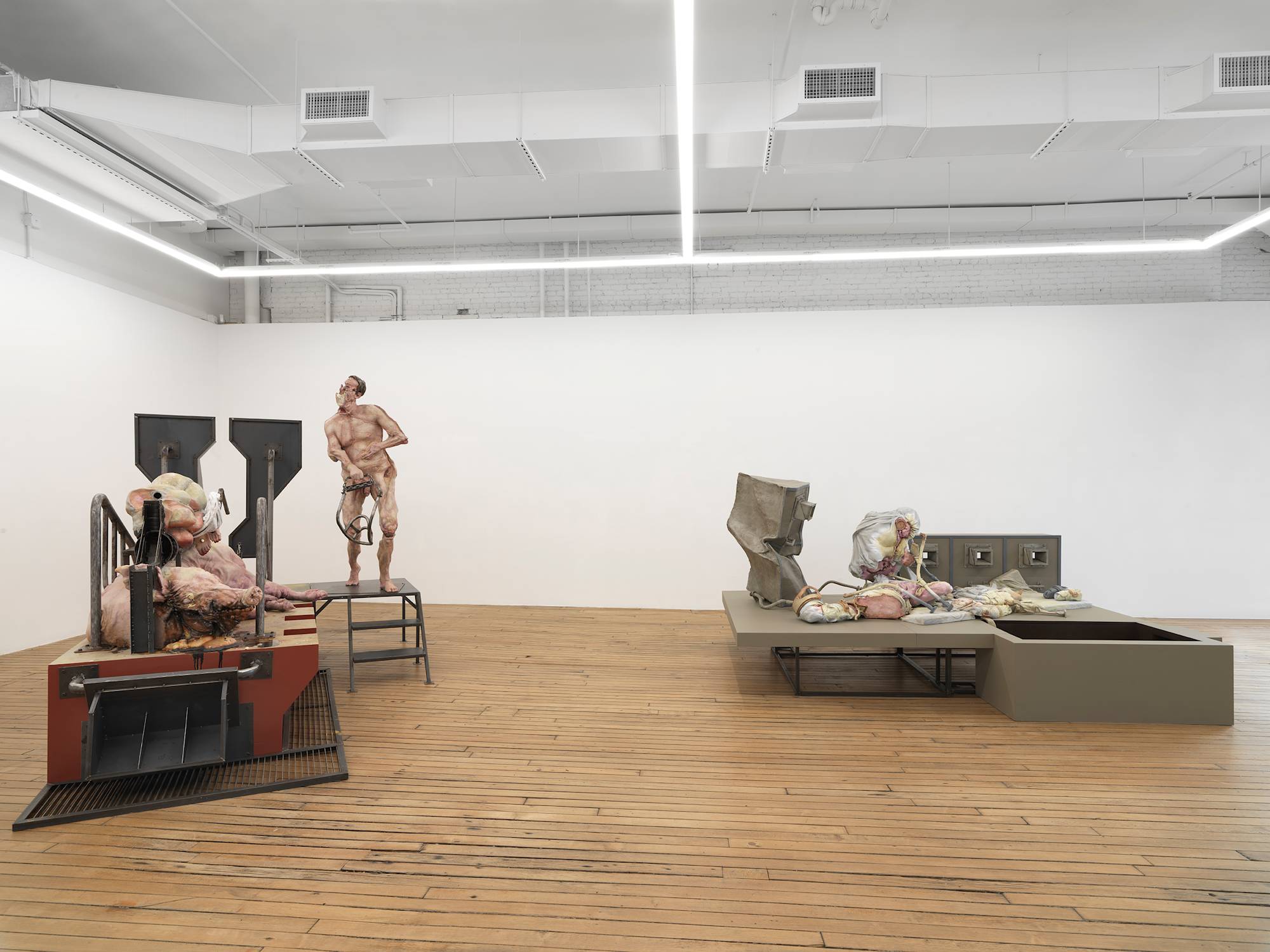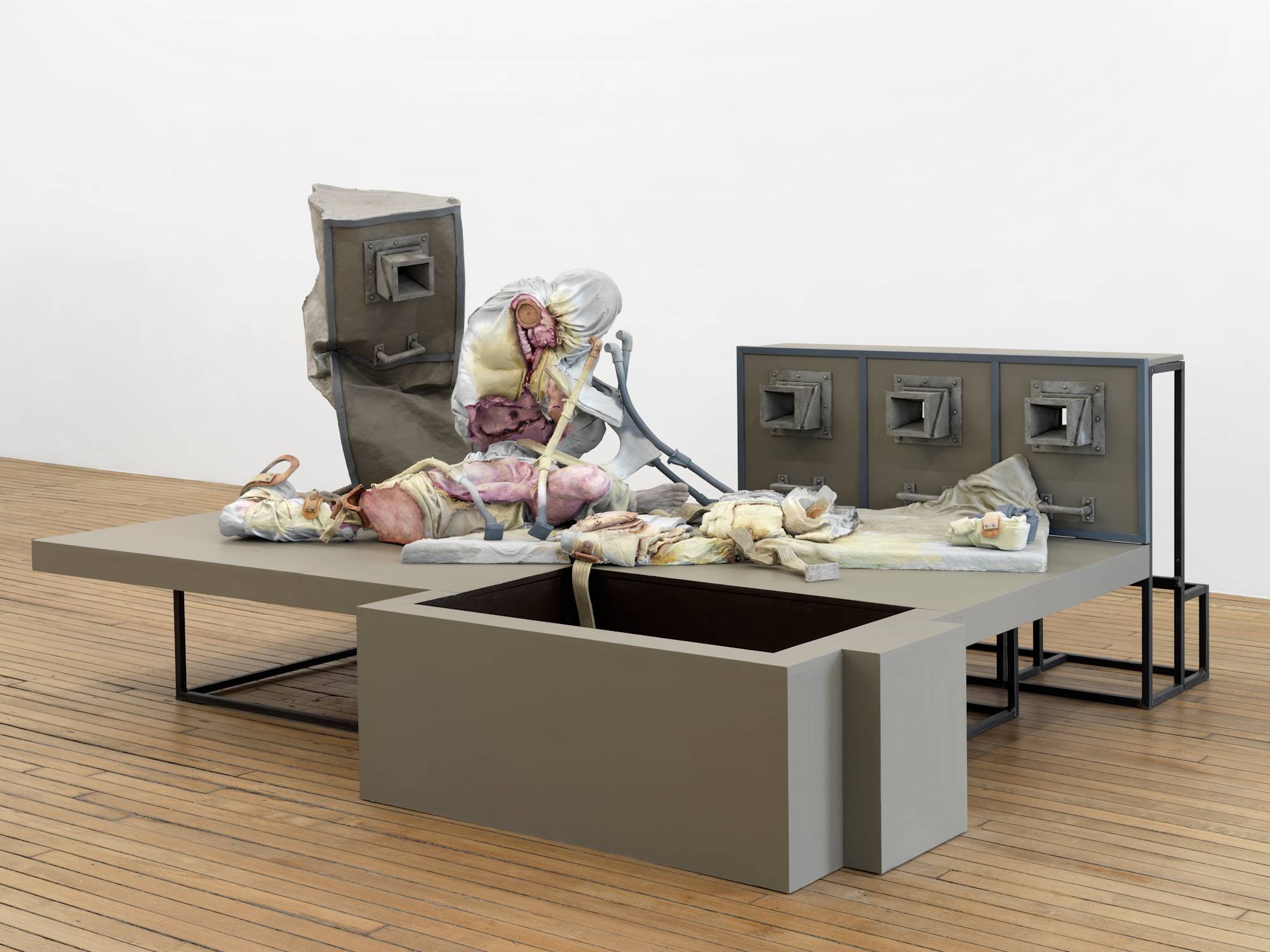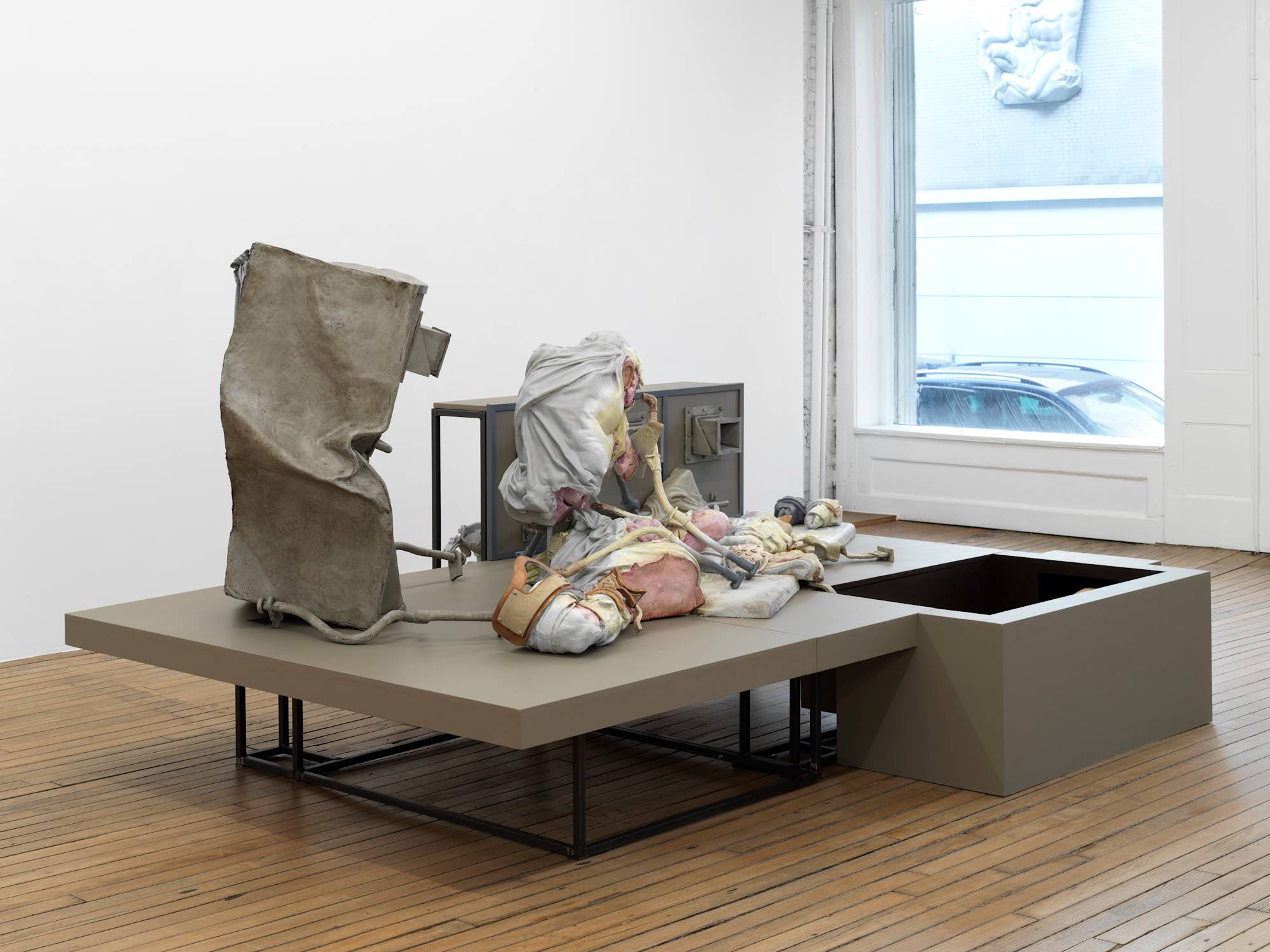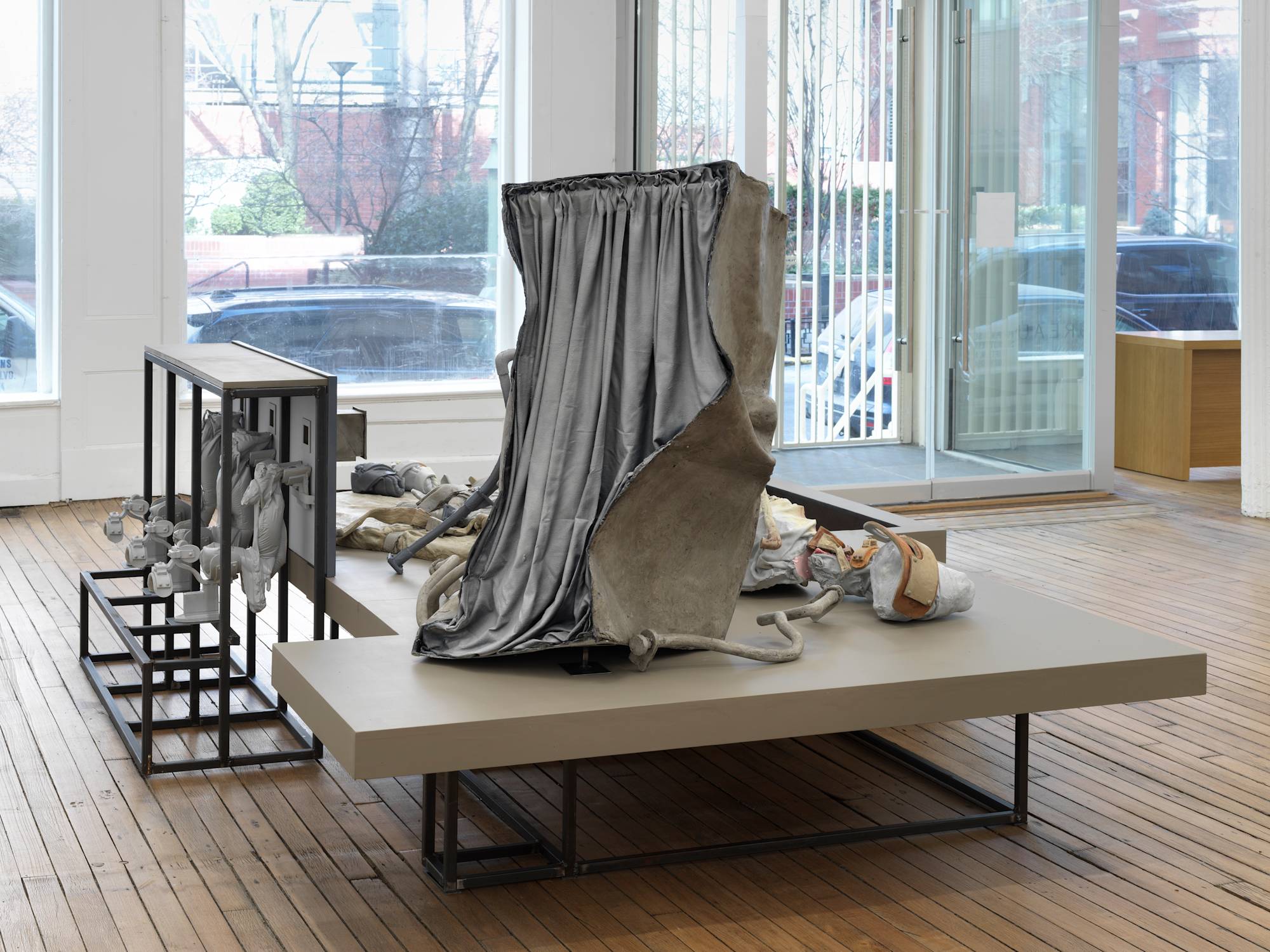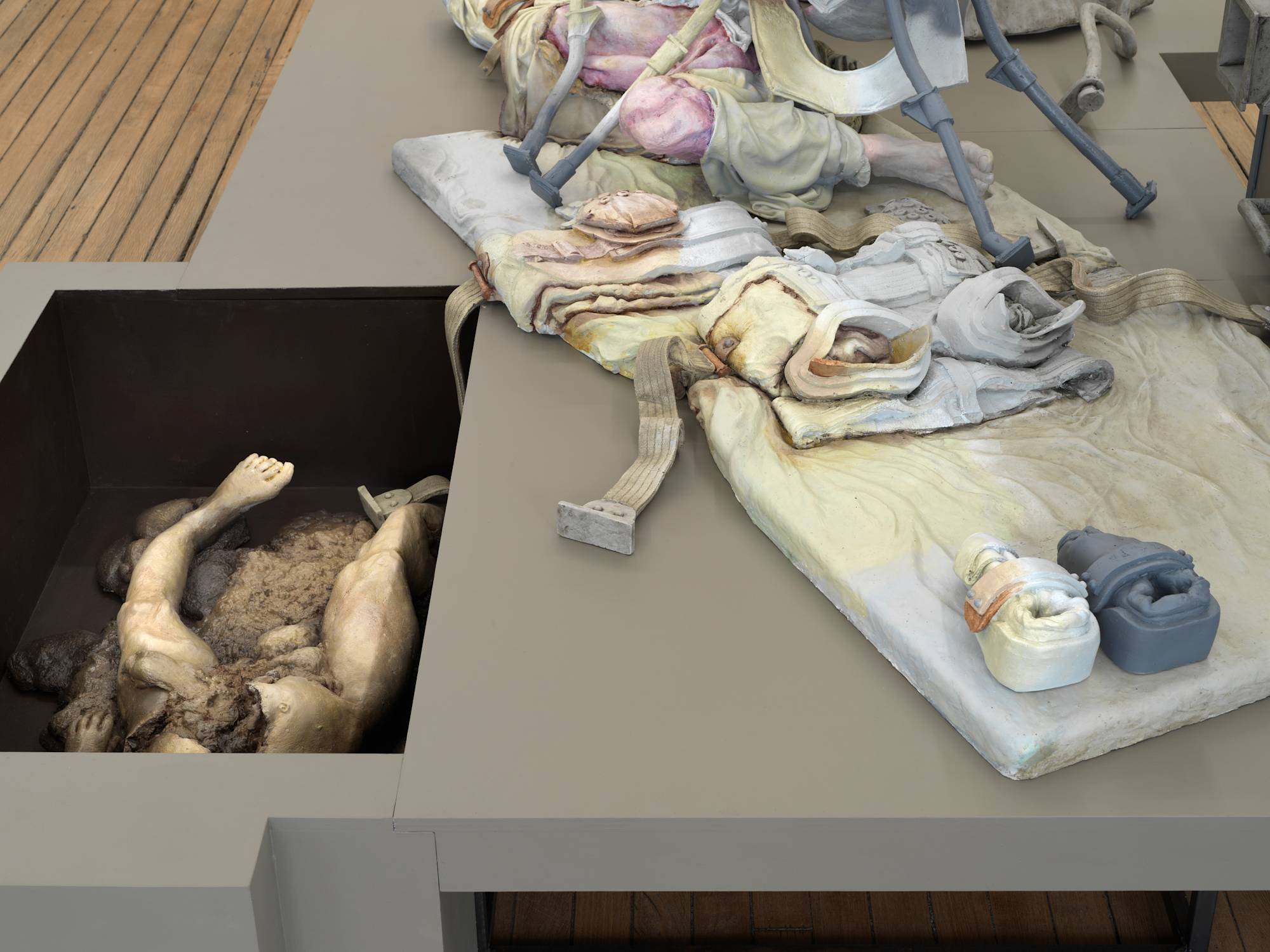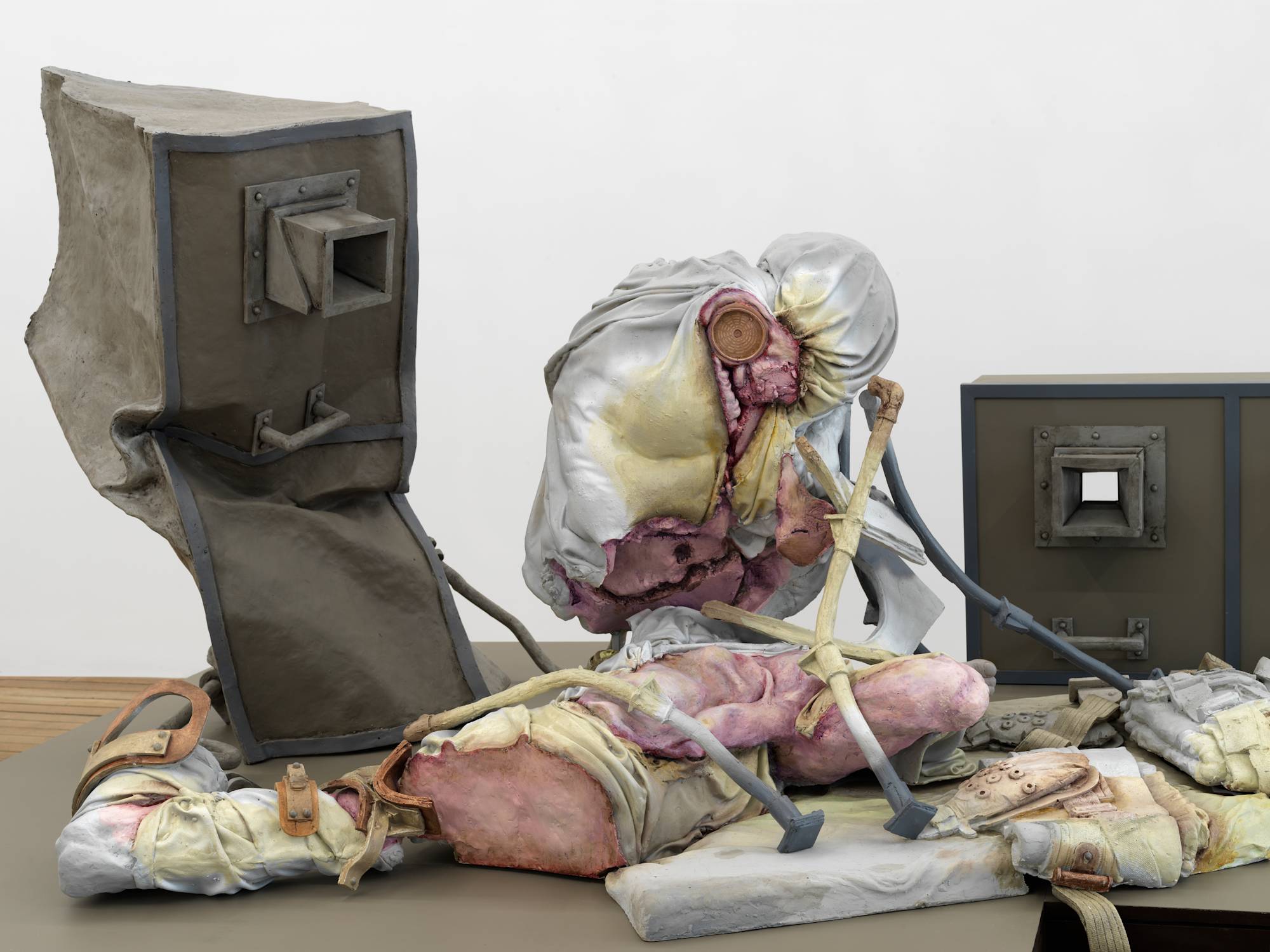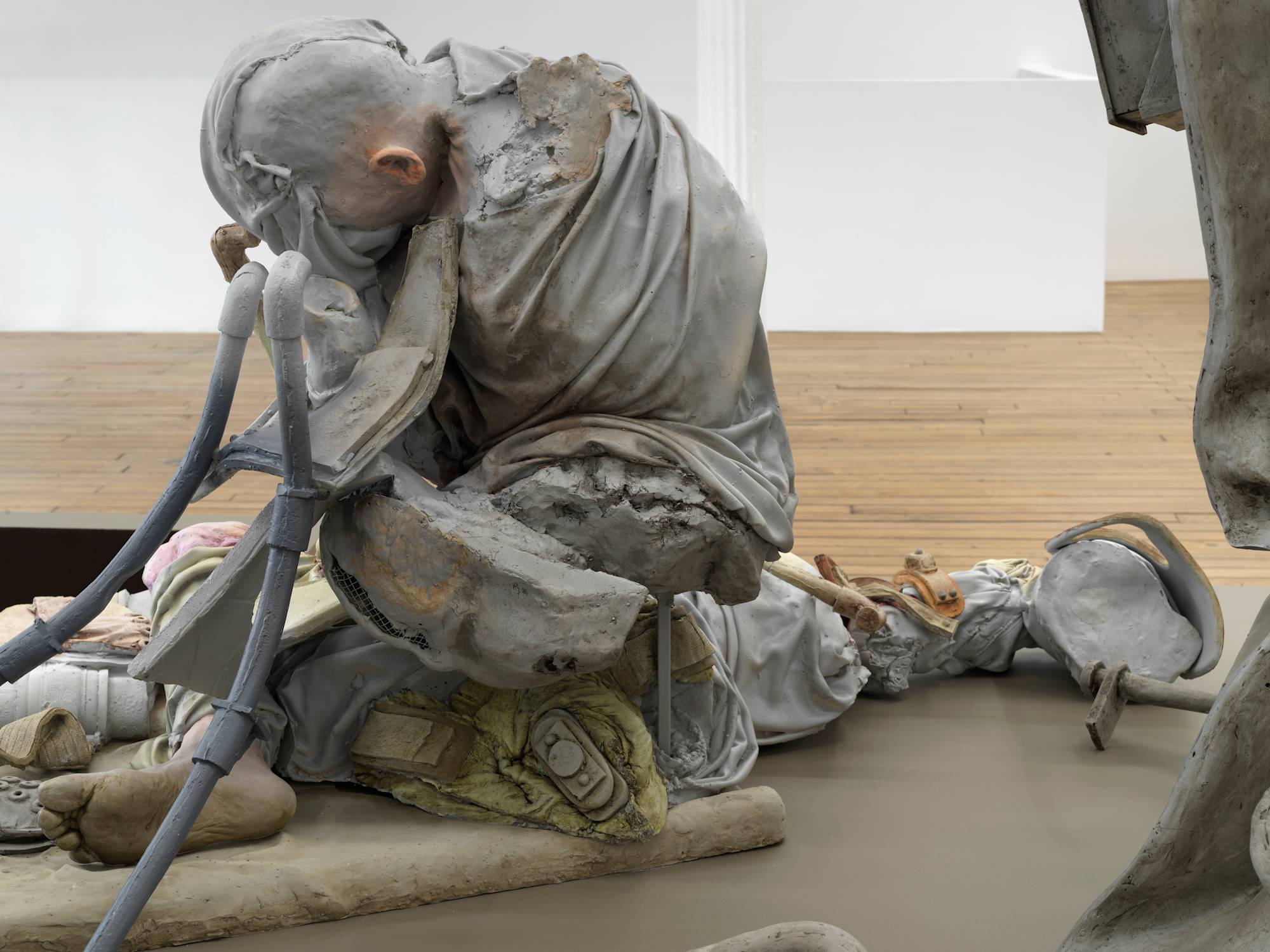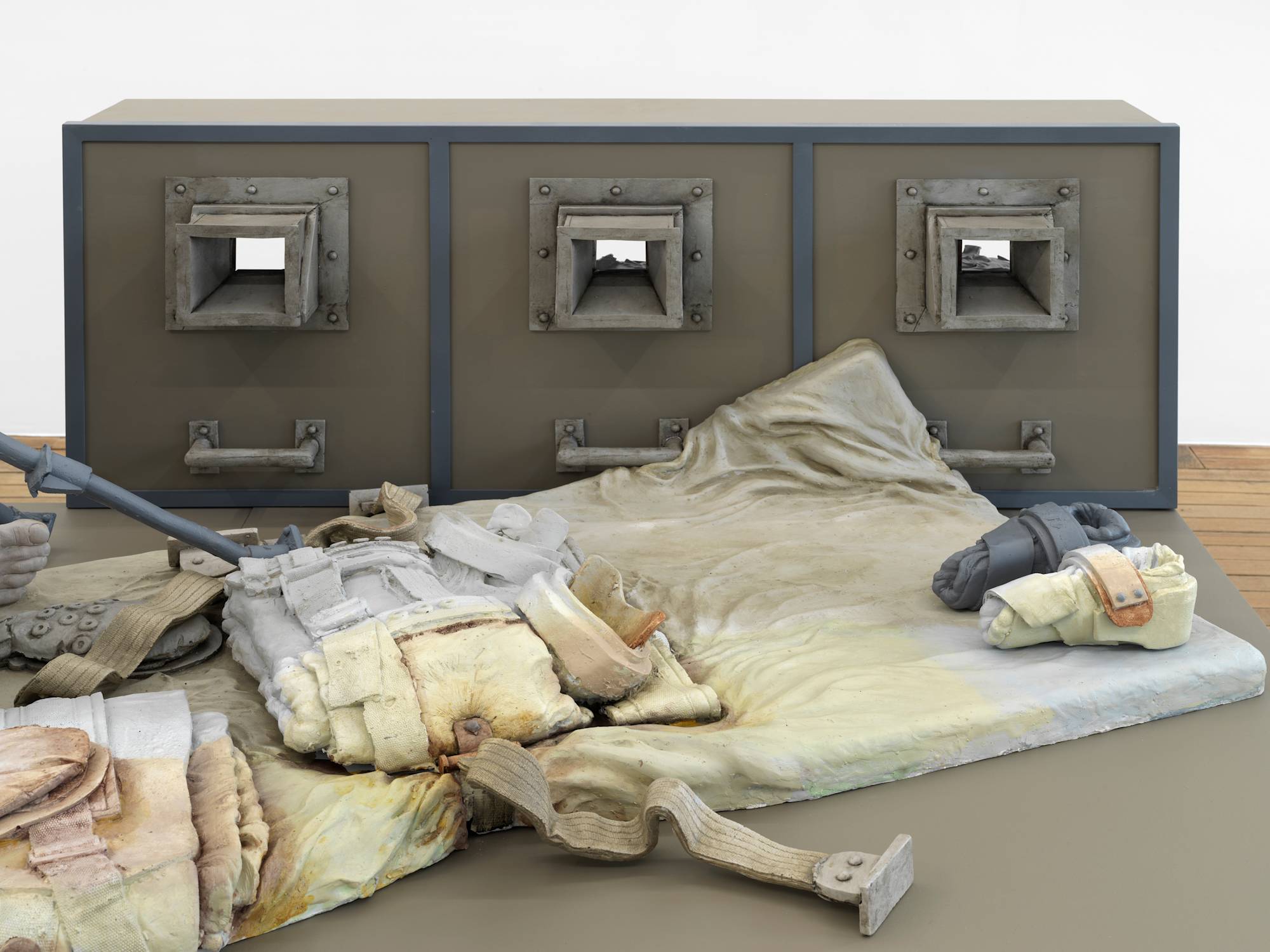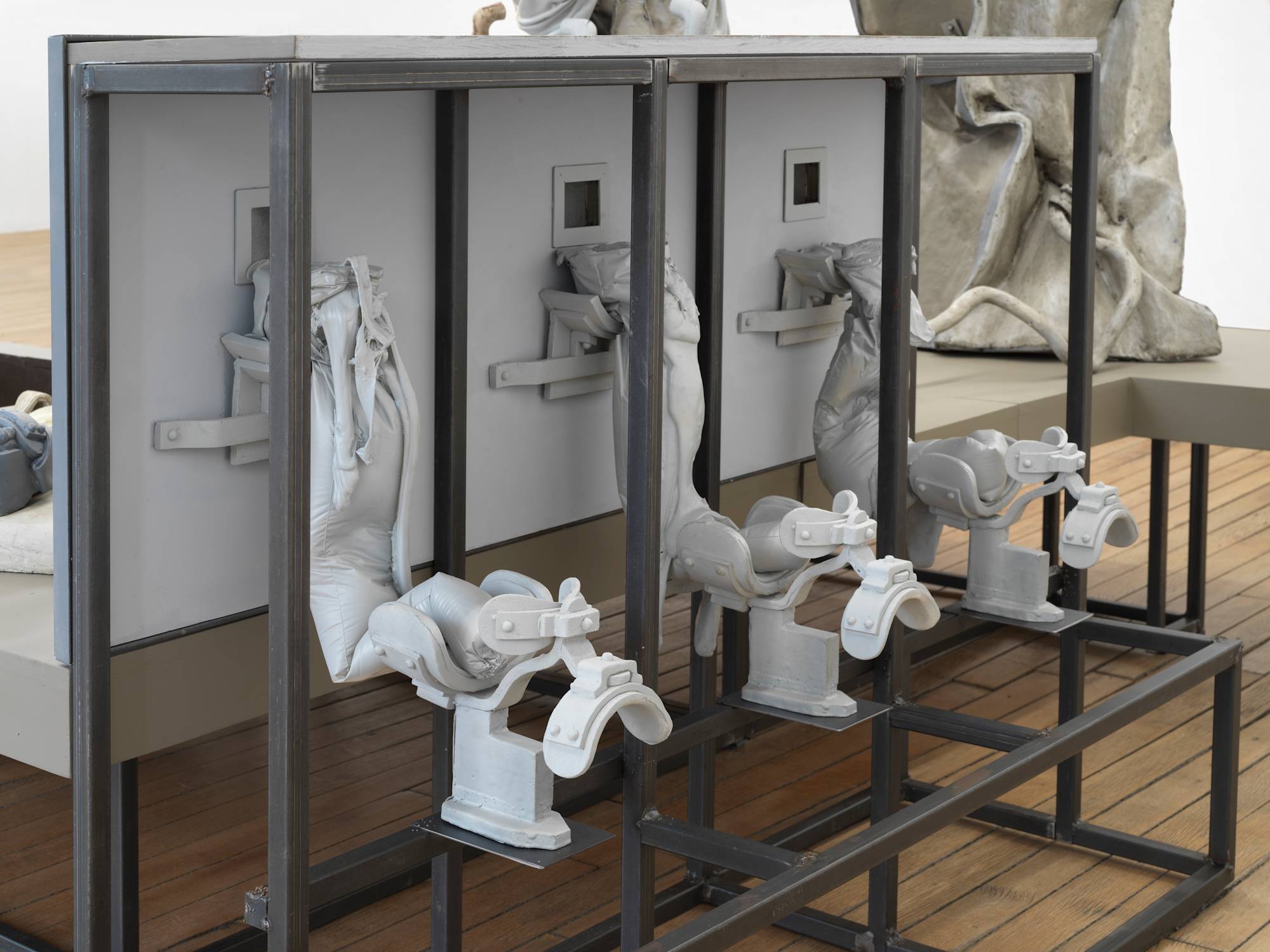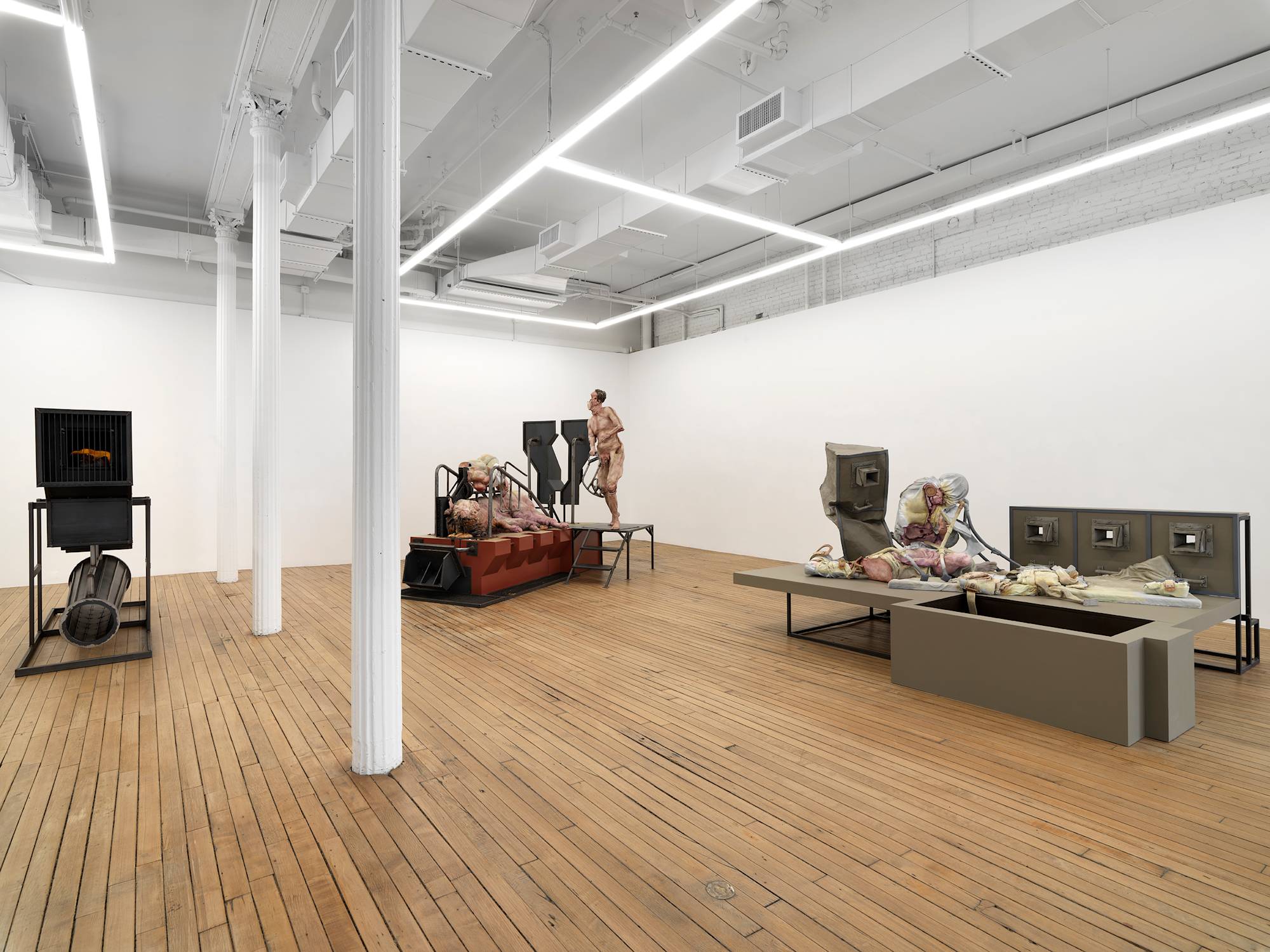Exhibition: Lionel Maunz 2025
Lionel Maunz Obedience March 1 - April 12, 2025
Bureau is proud to announce our seventh solo exhibition with Lionel Maunz, Obedience. The exhibition features three major sculptures, The Performance, The Pig, and A Model for a Furnace and a Model for an Adult. Through these pieces—looking into the work of Otto Muehl, Harry Harlow, R.D. Laing, among others—Maunz confronts failures of art, psychiatry, and religion to heal or transcend. Accompanying the exhibition is the artist’s text, which introduces the themes and subjects explored in the work. Obedience
I wanted this show to be maximal. I wanted a larger, more complete sense of cataclysm—something more environmental, less fragmentary, more total. Thinking about how narrative can be a means of using specificity to close, to limit access to interpretation.
You put monkeys, isolate in pits, ripped apart by total deprivation. What followed, putting in only as much care as was removed, a failure to rehabilitate that broken animal panic. You set to liberate your communards with sex and fracture until it was only your contempt that answered their freedom. You chained your hallucinating patients together for days, on all fours to feed, naked, to heal through a total encounter with stunted being. Do you have contempt for the feelings that motivate you? Have you tried to no longer see the damage so viciously?
My thinking had been consolidating around Otto Muehl, the artist and Friedrichshof commune leader; Harry Harlow, the primate researcher; and Elliott Barker, head psychiatrist at the Oak Ridge Asylum for the criminally insane and, importantly, a student of R.D. Laing. So the work starts there—trying to bring them together, or rather, collide them.
They’re eating their fingers now, sexless and insane. Deprivation or indulgence, still broken. Youth as butchered memory, as butchering inevitability. All the fathers, all the mothers and it feels so much like hatred. Do you want to see the healing that doesn’t exist? A metered power, a violence that isn’t so complete and perfect?
Broadly, I’m looking for instances where things fail into the precise opposite of intent—also at confinement, and at asymmetrical power dynamics—in an effort to extract my deep ambivalence around power and to clarify the joy that transforms it into cruelty.
When and where did you fail? Did you track it creep or did it just trample? Senseless, quivering, terrorized by botched instinct. Are you ashamed of what you’ve done or just who you’ve become?
Confinement exists in the world as family, religion, culture, need, law, fear, love. And as much as it’s an absolute and insulting reality, one still wallows in it. The problem being how willing the submission—and I have a real contempt for that—and begin to valorize the jailor over the inmate and identify with power, and from there the impulse is destructive. This aligns with the most salient impressions of my youth in preparing for and ultimately longing for cataclysm.
Is this dominion? Is failure cessation? Is love? And where exactly did you become an animal? You’ve made sure they can only ever move backwards, away from all this. Each terminus of psychiatry.
The Performance started with two men wrestling—thinking about Muehl’s early Aktions where he’s aggressively manipulating another body. Typically, I’ve worked with naked bodies, where they’re at their ugliest and most vulnerable, but I wanted clothes here to more precisely indicate shame and also reference the garments of patients and inmates. Impulsively, I began sculpting a pig head to sit atop the bodies to try and break or distort the image. But it’s not an image: it’s a thing in the world, interfering, competing with your body. Sculpture is the most finite, constrained, and, as a result, the most connected to biological reality of any of the arts, closest to death. Despite my resistance to metaphor, the pig seemed to work as a reference to the use of animals in the Aktions, as well as Muehl’s swinish public image and, finally, to the sycophantic communards, which by the end he answered only with conceit, contempt and abuse. The title refers to the general performativity of psychiatry as well as, specifically, the transformation of the psychiatric “work” of acting out traumas in the commune, to Aktions ultimately being curated to entertain rather than be therapeutic.
Was there growth in their decline, comprehension in their obstruction? Achievement in that incandescent defacement? Why the punitive rage, the gloating, the hideous excitement of watching it crawl into a pain dampened only with denial?
The Pig started with the previously discarded pig head. I went through a number of conceptual iterations of the pig via Nietzsche,“...in me dove, serpent and swine convene!”—via the correction of an older work referencing a Michael Gira text and, finally, uncomfortably landing on Robert Pickton. He’s a slob and an idiot, but unconstrained. And in his Piggy Palace, he unites prostitution and abattoir, architecturally satisfying my interest in how and where sex and violence coalesce, or rather meet and fracture into expanding personal definitions in front of legal ones. By the end of it, the pig is a landscape of birth and death, the standing figure an oblique reference to Pickton, but more so to the theme of the tyrant—of naked, unrepentant power and aggression. Oppositionally, the enormity of the acts one might commit weighed against the smallness of the needs satisfied.
The sex here is only as much as the disgust in it. The power transfixed by joy into cruelty.
A Model for a Furnace and a Model for an Adult is based on a combination of diagrams—of my family tree, a crematorium, and the building where Sabine Dardenne was kept. The furnace is where this all ends, where the ugliness is consumed and where Muehl burned all the communards’ journals in advance of his prosecution, coating large paintings with the ashes.
Do you want a definition of strength that doesn’t resolve as discipline or atrocity? Are you looking for something that isn’t flattened by experience, that can stand scrutiny without remove into safety or sentiment?
Punitive or protective? Love? It’s a complex response to childhood. To mine, to the children of the commune, the destroyed Capuchins, the victims of the inmates at Oak Ridge. Muehl and Laing via Barker are up to the same thing with the family and love—skinning them. Proving, then recapitulating the damage.
Health? You want to see a need for destruction, more sentience, rather than careless lapse. How selfish are you? Beyond the threshold of convalescence, these real impossibilities of recovery or growth.
—Lionel Maunz Lionel Maunz (b. 1976, Washington D.C.; lives and works in New York, NY) received his BFA and MFA from Southern Methodist University in Dallas, TX. Solo and two-person exhibitions include Forest Passage, Darja Bajagić & Lionel Maunz, Downs & Ross, New York, NY (2022); Where the Body Ends, Bureau, New York, NY (2022); In the Sewer of Your Body, Bureau, New York, NY (2018); Discovery of Honey / Work of the Family, The Contemporary Austin, Austin, TX (2017); Fealty, Bureau, New York, NY (2016); Lionel Maunz, MoMA PS1, New York, NY (2016); Deluge, Bureau, New York, NY (2014); Receipt of Malice, Bureau, New York, NY (2012); Wail Eternal Scorn of Geologic, Bureau, New York, NY (2011). Maunz’s work is in the permanent collection of the Whitney Museum of American Art, New York, NY; Museum of Modern Art, New York, NY; and the Blanton Museum of Art, Austin, TX.
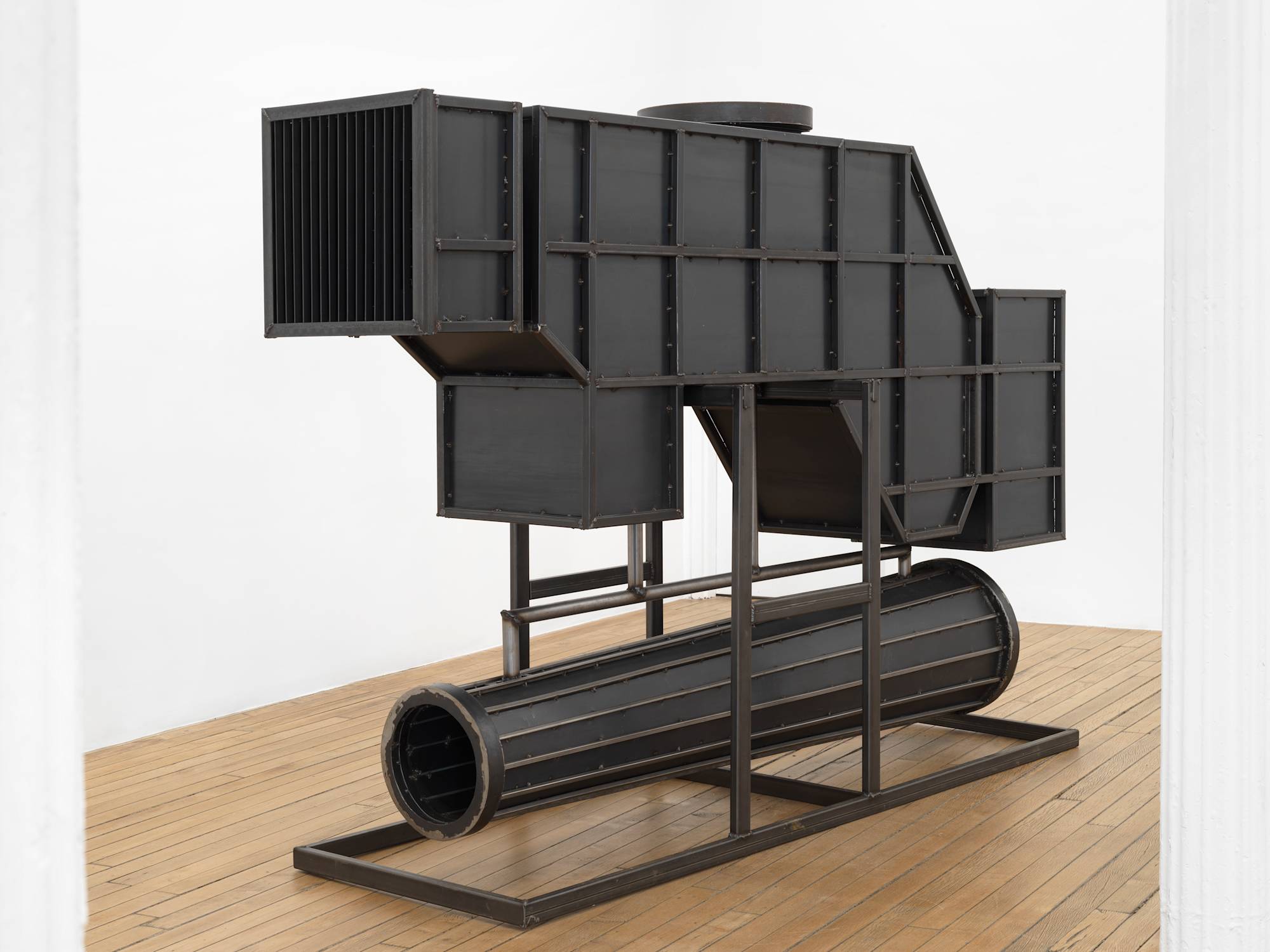
A Model for a Furnace and a Model for an Adult, 2025, Steel, polymer modified gypsum, fiberglass, urethane resin, plaster, burlap, epoxy paste, plexiglass, acrylic paint, 73 × 29 ⅞ × 104 ⅝ in. (185.42 × 75.88 × 265.75 cm)
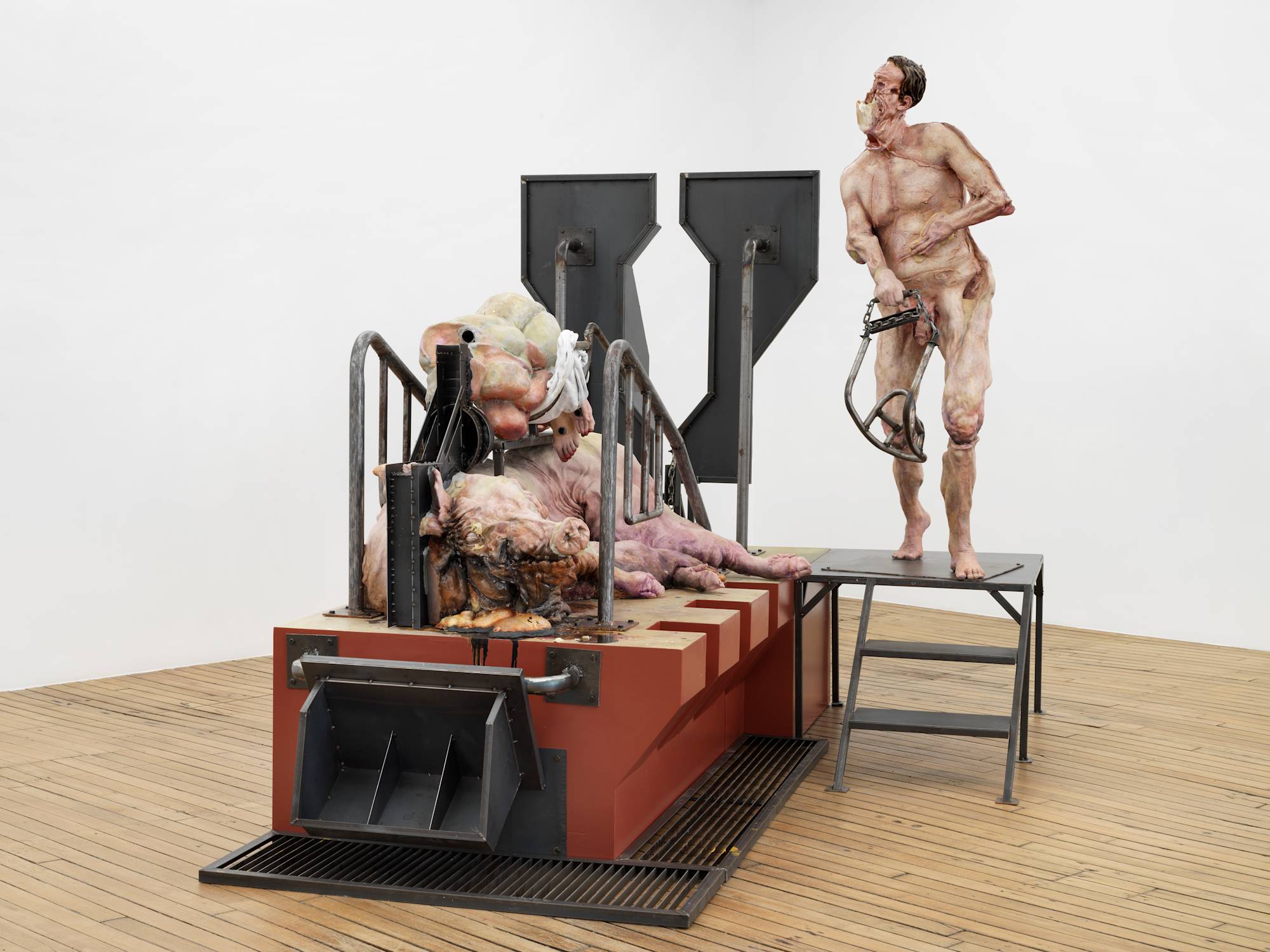
The Pig, 2025, Epoxy resin, fiberglass, polymer modified gypsum, urethane resin, epoxy clay, epoxy paste, plaster, burlap, steel, wood, acrylic paint, latex paint, 95 ¾ × 86 ¾ × 135 ¼ in. (243.21 × 220.35 × 343.54 cm)
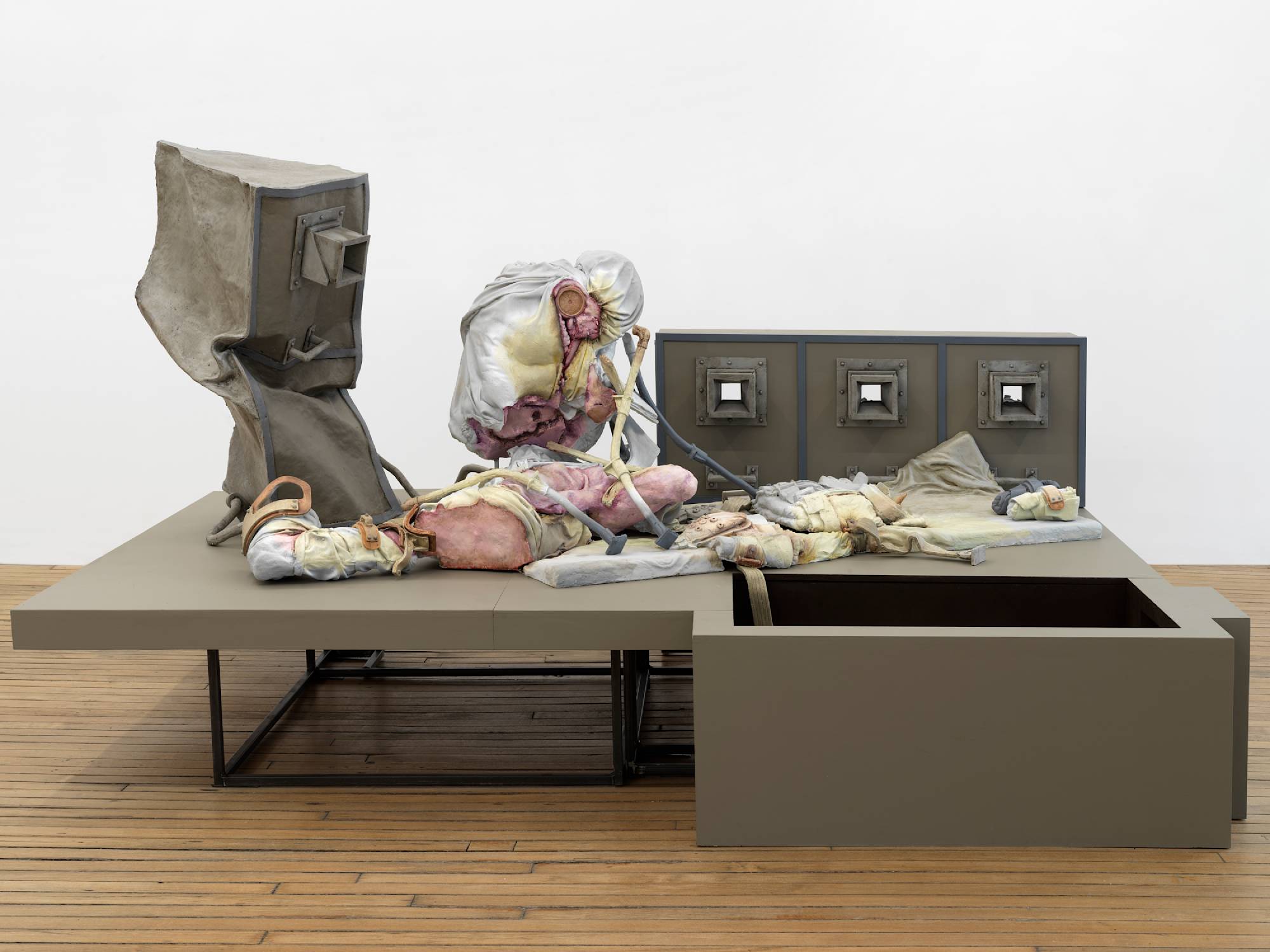
The Performance, 2025, Epoxy resin, fiberglass, polymer modified gypsum, urethane resin, epoxy clay, steel, wood, acrylic paint, latex paint, 67 × 97 ¼ × 123 ½ in. (170.18 × 247.02 × 313.69 cm)
Photography by Dario Lasagni
